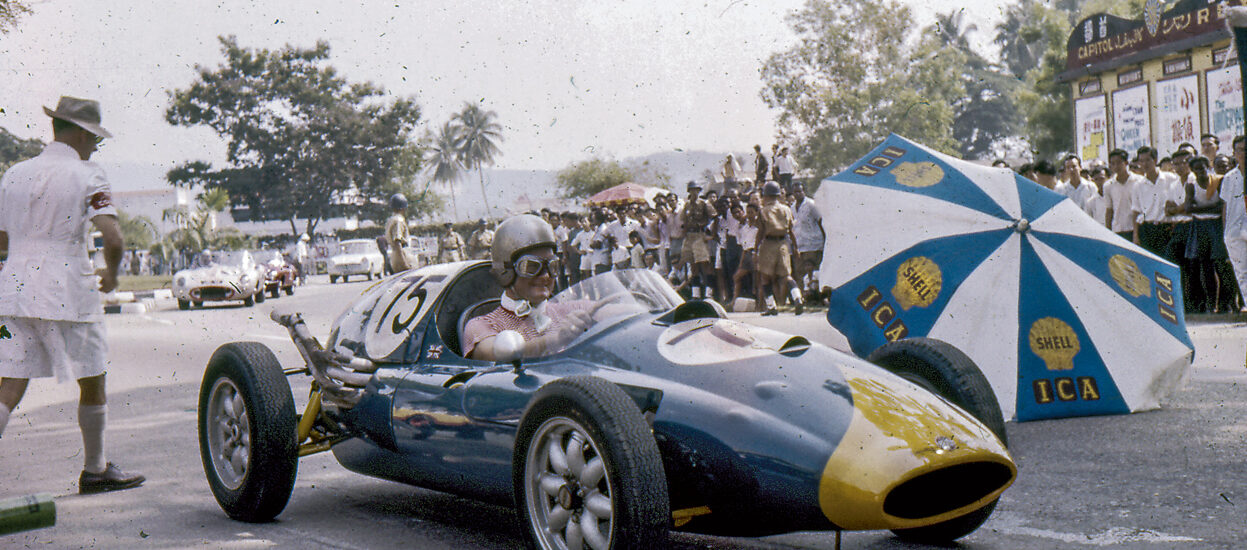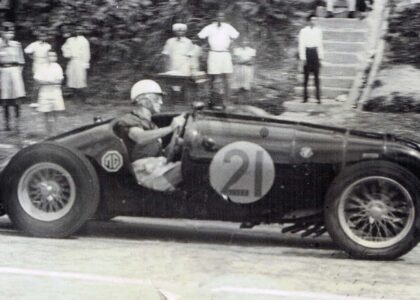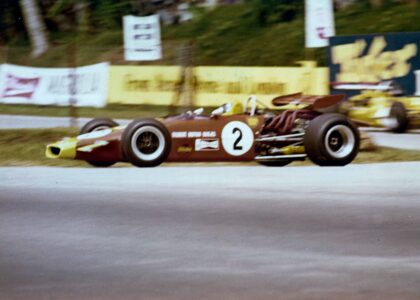Last Update: 21 January 2022
Eli Solomon of the RMA Resource Center takes a close look at one of the two T51 Cooper FPF Climax single-seaters that raced in the Far East and South East Asia.
Back in 2013 I wrote a short article about the Formula 3 Coopers that raced in South East Asia [see A Cocktail For Cooperholics, Rewind Magazine Issue 015, July 2013]. The article merely skimmed the surface of what is a much bigger story involving Cooper racing cars in the Far East. Cursory mention was made of a couple of the bigger Coopers that raced in the region – the Formula 2 T51s – though at the time, I had not been able to determine if one of them was a T43 or a T51. This article is about that car – chassis F11/10/57.
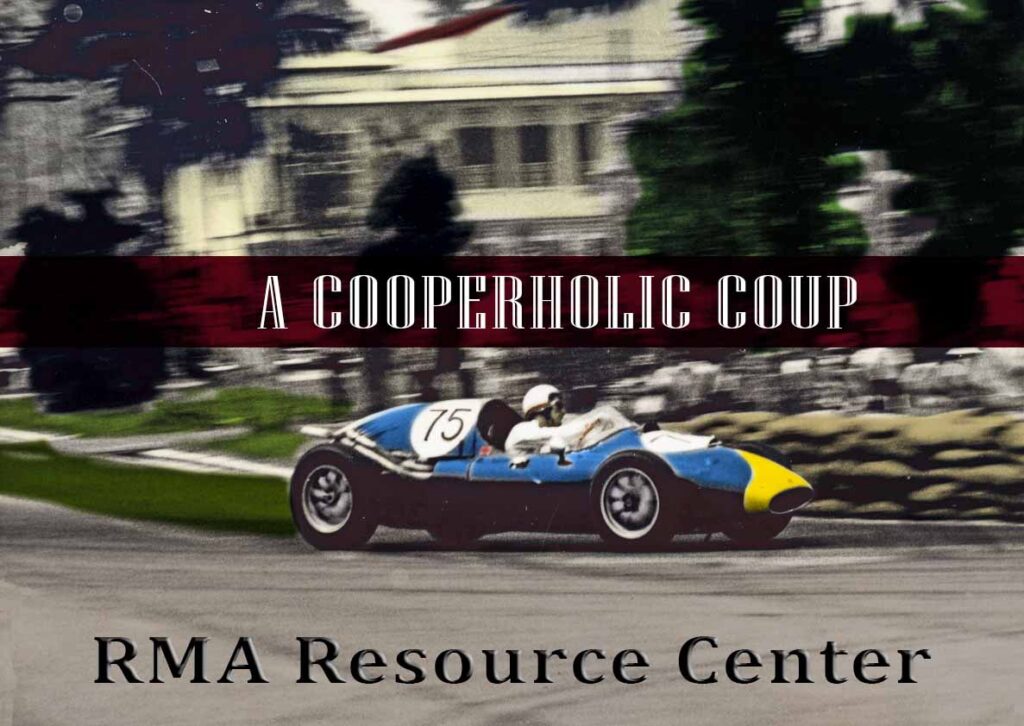
Mike Cook in the T51 at the Johore Grand Prix.
COOPER ORIGINS
ORIGINS: The story goes that to avoid new car purchase tax, the Cooper Car Company 1 scrapped one of its 1957 ‘Driver Training’ T43 F2 school cars and transferred the chassis plate to a new T51, a car bound for the colonies (in this case, Hong Kong). Tax purposes, you see. They call it the “Carnet Scam”. [see Appendix 1 below]
This new T51 was then exported directly to Hong Kong, to racing enthusiast and Cathay Pacific pilot Ron Hardwick. Hardwick had already won the Macau Grand Prix in his Jaguar XKSS 2 (chassis 757 3) in 1959 and the Formula 2 T51 was deemed suitable to tackle Macau’s Guia circuit, what was going to be the dawn of a new age of Formula racing in the Portuguese colony.
HONG KONG SOJOURN
The car duly arrived in Hong Kong in late 1960, in time for the Hong Kong Motor Sports Club’s Sek Kong Slalom held on 11 December 1960. It had a high compression, high-revving, four-cylinder Coventry Climax 1.5-litre Mark 1 FPF motor that had been created for the new 1.5-litre Formula 2 class of racing 4. With an engine capable of putting out 141bhp at 7300rpm, it was clear that the single-seater would be very competitive against the predominantly sports car grids in the Far East. Hardwick promptly won the Pirelli Cup for setting FTD in the sports and racing cars class at one of the Hong Kong Motor Sports Club events [see results listing at the end of this article]. But things didn’t go according to plan for the pilot. A change in the Macau Grand Prix eligibility rules excluded the car from the 1960 Macau Grand Prix5. Suddenly the Formula 2 single-seater was surplus to Hardwick’s requirements. When Hardwick sold the car, it had amassed a minimum of six FTDs in the Hong Kong Motor Sports Club events.
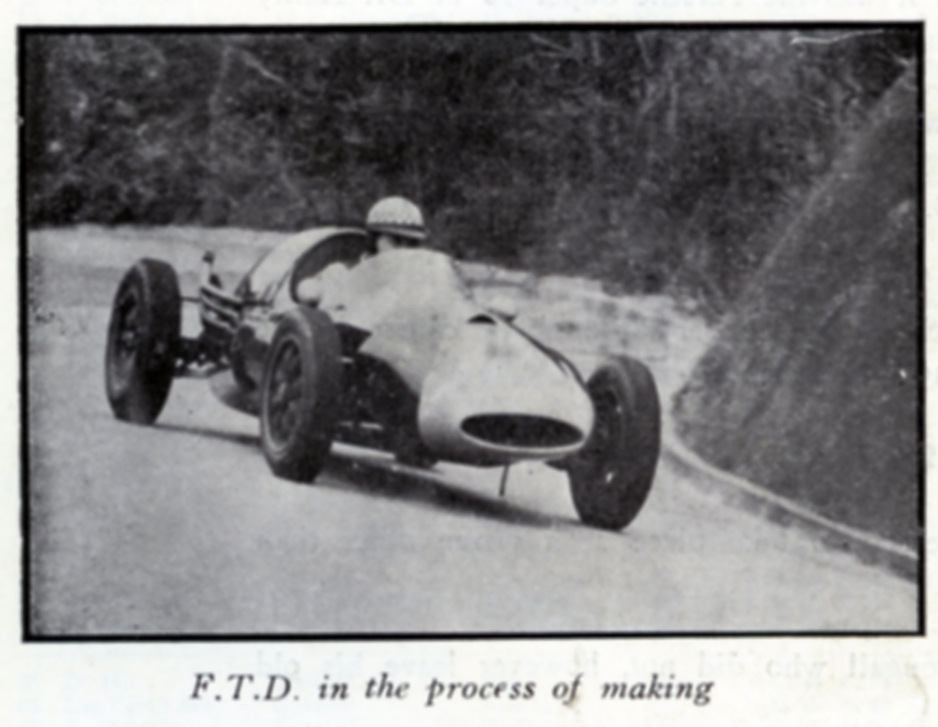
Ron Hardwick in his T51 in Hong Kong. Hong Kong Motor Sports Club Year Book.
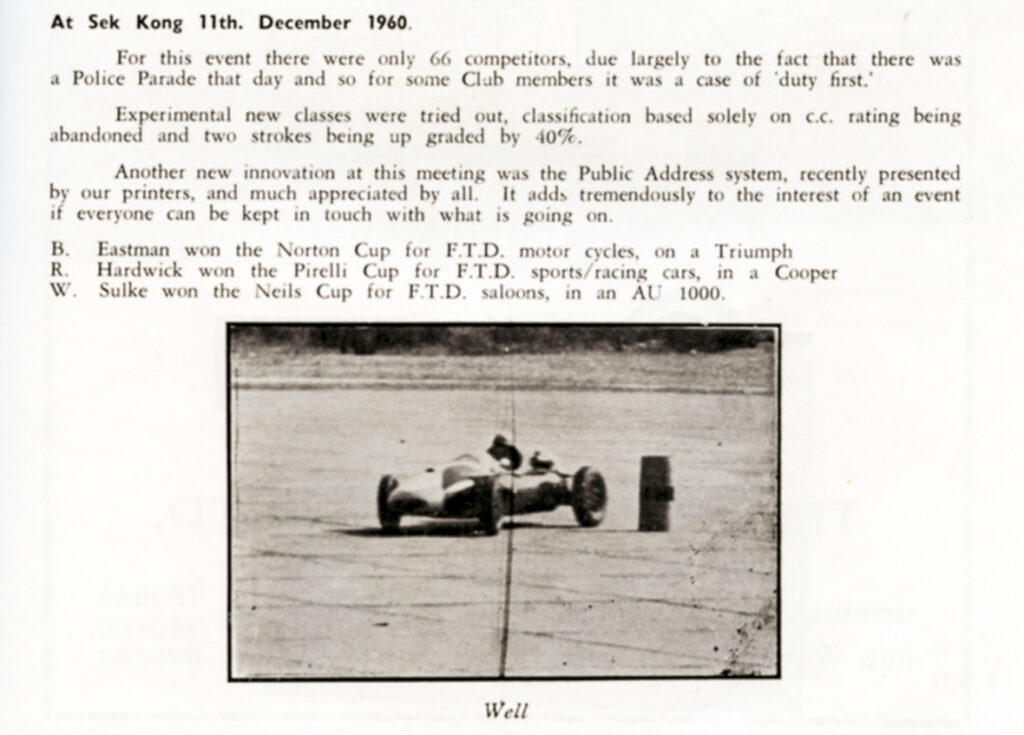
The Pirelli Cup to Ron Hardwick at the December 1960 Sek Kong Slalom, Hong Kong.
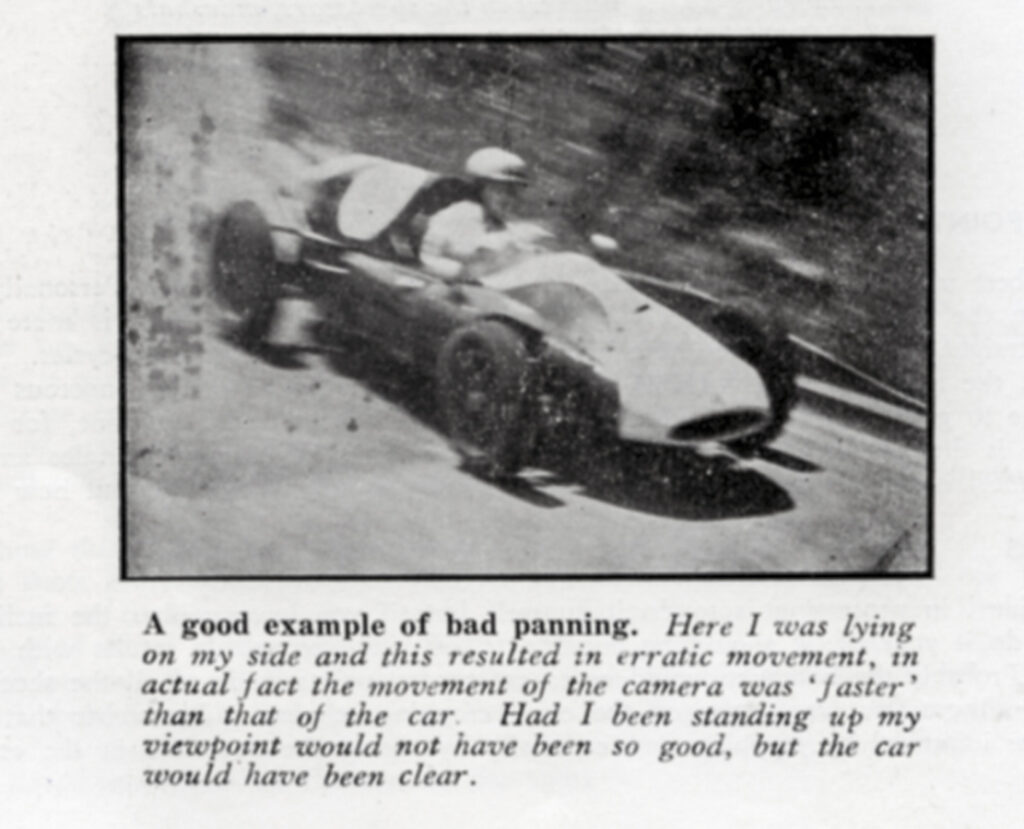
In an interview Al Campbell conducted with Hardwick for the South China Morning Post [Hardwick Recalls His Famous Hour, 18 November 1994], the former racer revealed: “I tell you though, the Jaguar [XKSS] wouldn’t have won in the ’60 race if I had been allowed to enter my Cooper Climax…That car had a 1.5 litre engine, the same as they were using on the Formula One circuit in Europe and the organisers of Macau knew it would have given me an advantage so they disallowed it.” The Formula Libre rules out in South East Asia were far less rigid and so it wasn’t difficult to interest the more affluent chaps in Malaysia and Singapore. One of them was Singapore tycoon and Aston Martin/Citroën importer Chan Lye Choon. But Chan had more pressing business matters to address. Chan had already imported George Baker’s Ferrari [see JUST THE RIGHT AMOUNT OF TORQUE] and flipped it to Jan Bussell and was now on the lookout for a suitable sports car to replace his Aston Martin DB3S (he eventually imported a Mk1 Lola Climax).
A COOPER RACING IN MALAYA
Step in 31-year-old Johore planter Peter Greatorex Cowling [b. July 1928]. Cowling had competed in Singapore Motor Club events for the first time in 1959, running an MGA as well as a 499cc Norton motorcycle. He quickly progressed to the ex-Bill Ferguson6 1949 Cooper Mk IV7, racing the car with a 499cc Norton engine. At the 1960 Johore Coronation Grand Prix, Cowling raced the Mk IV Cooper under fellow planter Ian Barnwell’s Ecurie Utan team (utan = jungle in Malay). But a Cooper JAP/Norton/Triumph wasn’t going to cut it in a 200 mile Grand Prix in the 1960s.
PLANTER’S PUNCH
PLANTER’S PUNCH: The catalyst for a renewed interest in race cars in South East Asia was the result of talk that the Johore Grand Prix would be resurrected as part of the 1960 Coronation celebrations for the new Sultan of Johore. The last Grand Prix had been held in 1953 and outside of a one-off circuit race at the RAF Changi airfield in 1957 [see LANDING AT CHANGI], there had not been a proper circuit race in South East Asia since. It all changed in 1960.
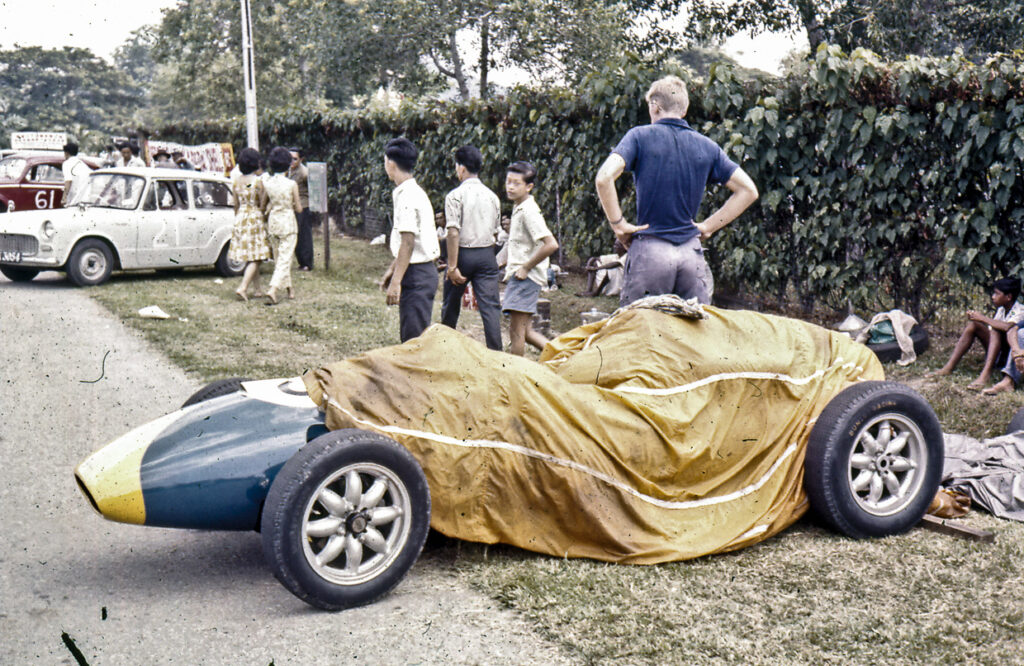
The T51 while still in the ownership of Peter G. Cowling.
Cowling needed something faster (and bigger) for the 1961 season and the T51 Cooper fit the bill perfectly. Fellow planter Barnwell had upsized when he purchased Chan Lye Choon’s Aston Martin DB3S [see FOR THE PRICE OF A HOUSE] and Ron Hardwick’s car was on the market. A deal was struck and the T51 was shipped to its new home in Johore, in time for the 1961 Johore Grand Prix.
Further reference to the Hardwick connection appeared in a feature on the 1961 Johore Grand Prix in Singapore’s Straits Times of 23 June 1961, Page 9, “Grand Prix—it’s eyes on future”. “The first world class racing car – the Cooper Climax Formula II – which has a maximum speed of 170mph, will be driven by the Federation’s leading driver, Peter Cowling. This one-seater Cooper has been tipped as the winner. It was bought from Hong Kong’s Ron Hardwicke [sic], who at first thought he would be competing in it. But it is not the fastest machine. The honour goes to Stanley Leong’s locally-built Lotus-Ferrari. On Johore conditions, however, the experts thing the Cooper is better suited for the race.” The local reporters had never experienced a Grand Prix on home soil before so the level of knowledge on motor racing would have been somewhat lacking.
In an interview with this writer, Ian Barnwell recounted his experience of the 1961 Johore Grand Prix. “Tengku Makhota of Johore, Tengku Mahmud, was a motor racing enthusiast. As Sultan of Johore, he later became Yang di Pertuan Agong. He was such an enthusiast that he let Peter Cowling and I leave our cars in the front porch of his Istana before the 1961 Johore Grand Prix instead of in the ‘parq fermée’. When we went to collect the cars before dawn on the morning of the race, we found a soldier with rifle and bayonet guarding them!”
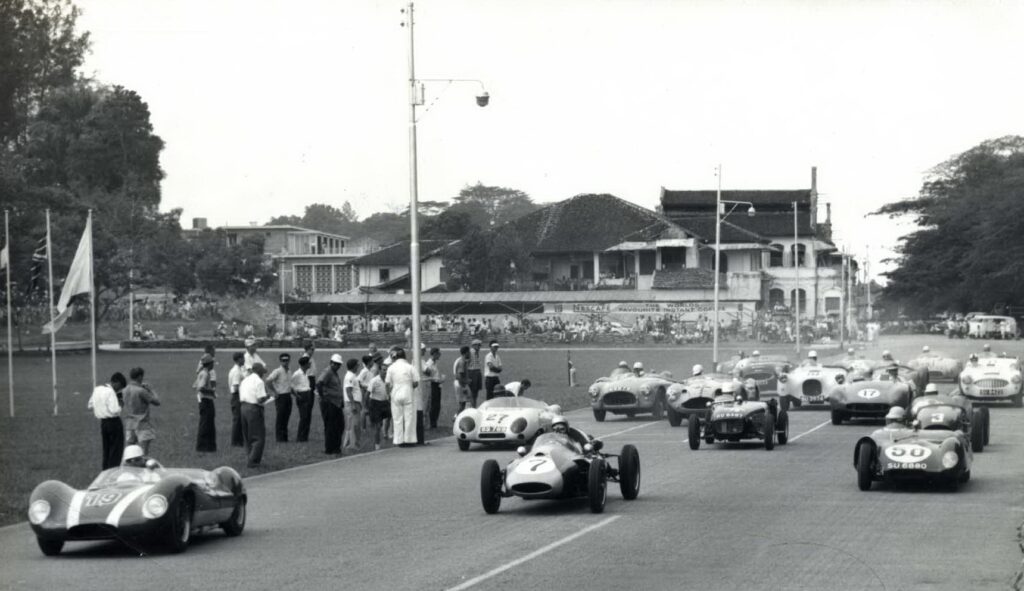
The Johore Grand Prix Grid of 1961 streaming down the main straight past the Esplanade with Chan Lye Choon’s Lola Mk1 Climax leading Peter Cowling’s Cooper F2 Climax (# 7). No. 50 is Peter Brown in the Lotus 17 (road registration SU6880). No. 27 is Tony Huggett in his Lotus 11 Le Mans Climax (road registration SS769).
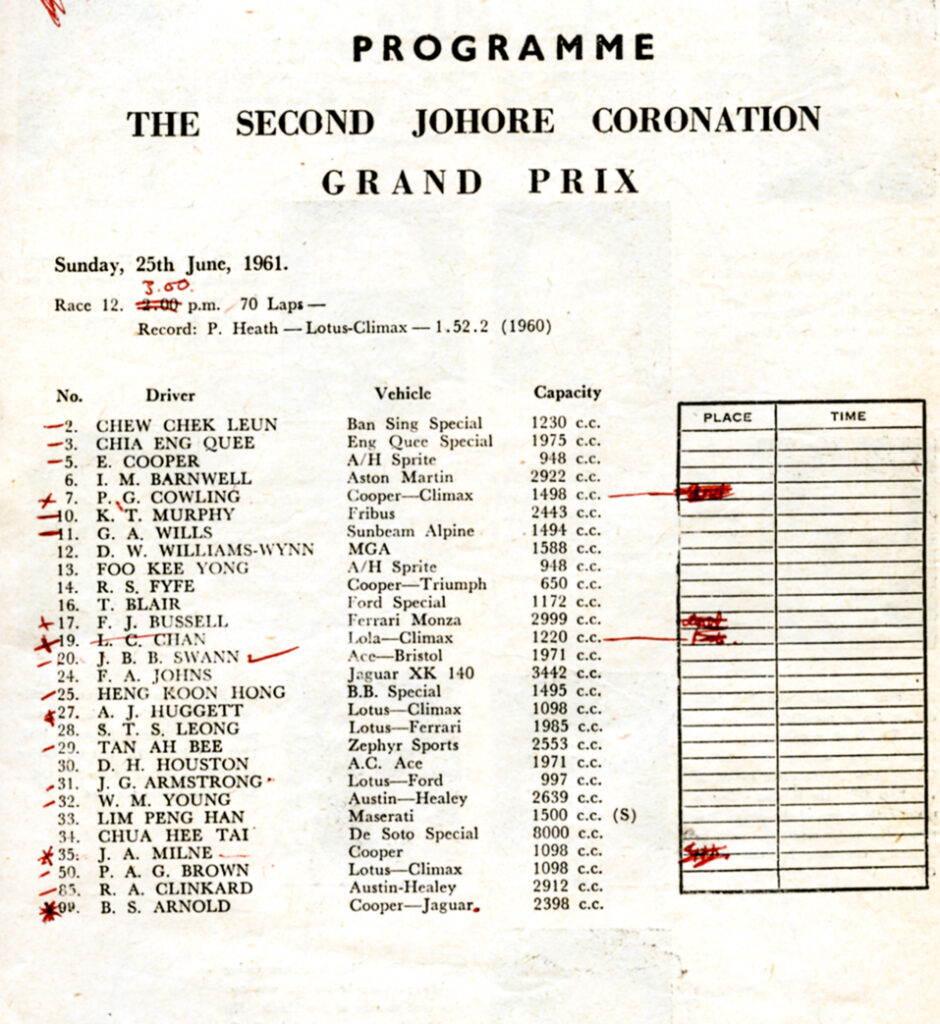
FASTEST CAR AROUND
Look at the grid for the 1961 Johore Grand Prix and you’ll see why the T51 was easily the fastest car around. Sure, there was the Aston Martin DB3S and Ferrari Monza (both cars from the mid-1950s), an XK140 Jaguar, and a couple of Lotus and Lola Climax with FWA/FWE motors but there were no other single-seaters (the Cooper JAPS and lone pre-war Maserati 4CS didn’t really pose any sort of threat). The T51 was the car to beat and true to form, a new lap record was quickly established…but racing isn’t about having the fastest car out there. In the Grand Prix Cowling slid into the sandbags soon after setting FTD. All good except that he was assisted back on the grid by spectators and was promptly black-flagged by the officials.
He’d have to wait a full year for the next Grand Prix but things were happening at such a frantic pace that Singapore leapt into gear and announced that it too would hold a Grand Prix – in September 1961. Two major races annually? Things were looking up for enthusiasts like Cowling and Barnwell.
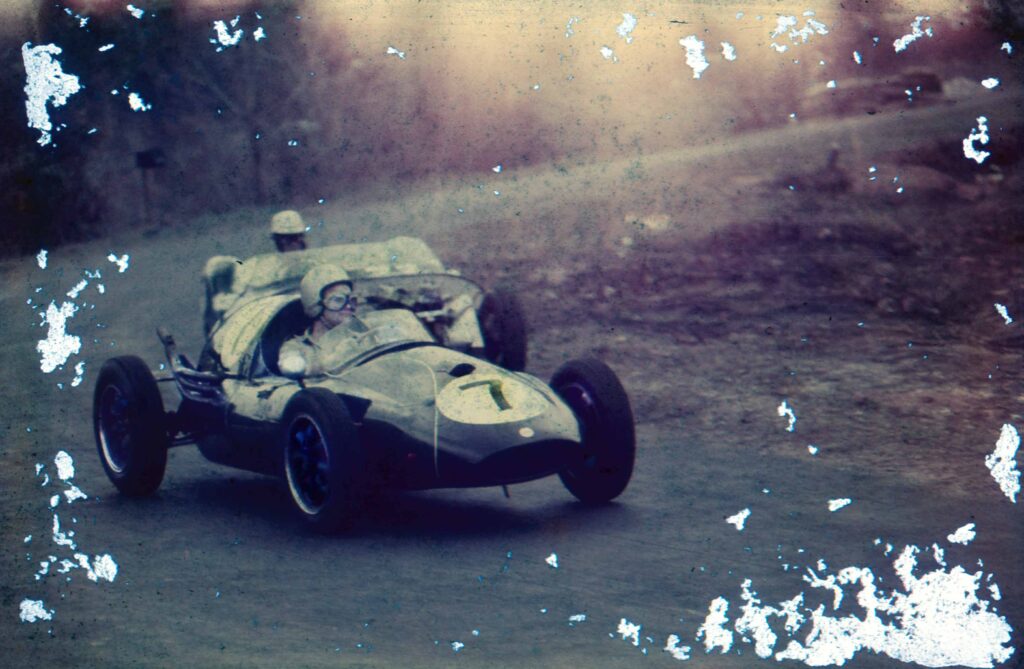
Peter Cowling’s T51 with revised paint scheme for the 1961 Singapore Grand Prix, following an altercation with sandbags at the 1961 Johore Grand Prix.
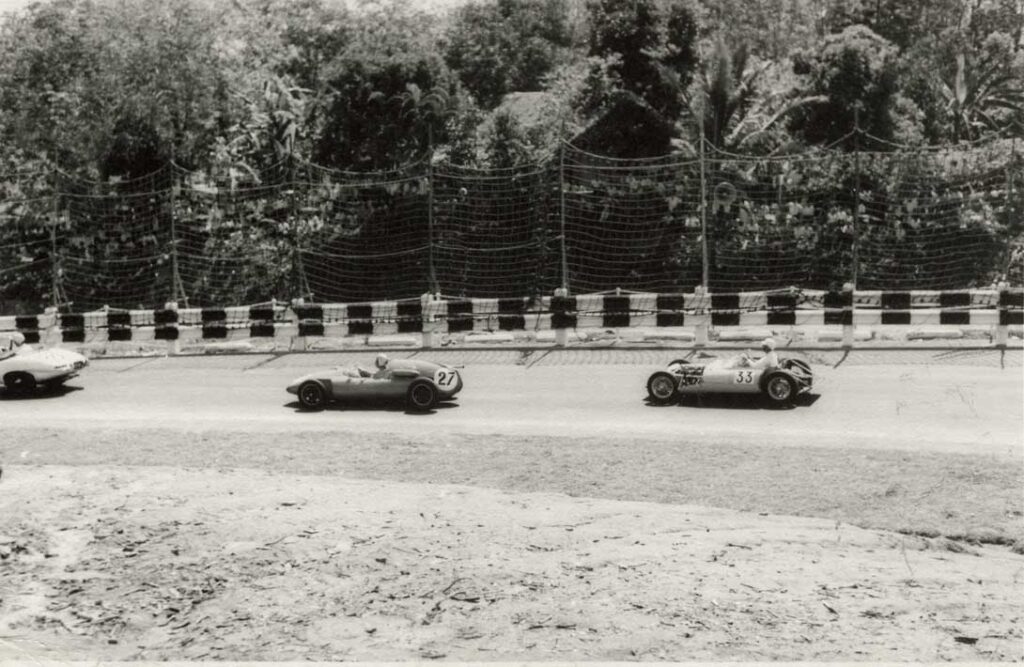
Singapore Grand Prix 1962 Cowling in the #27 T51 Cooper.
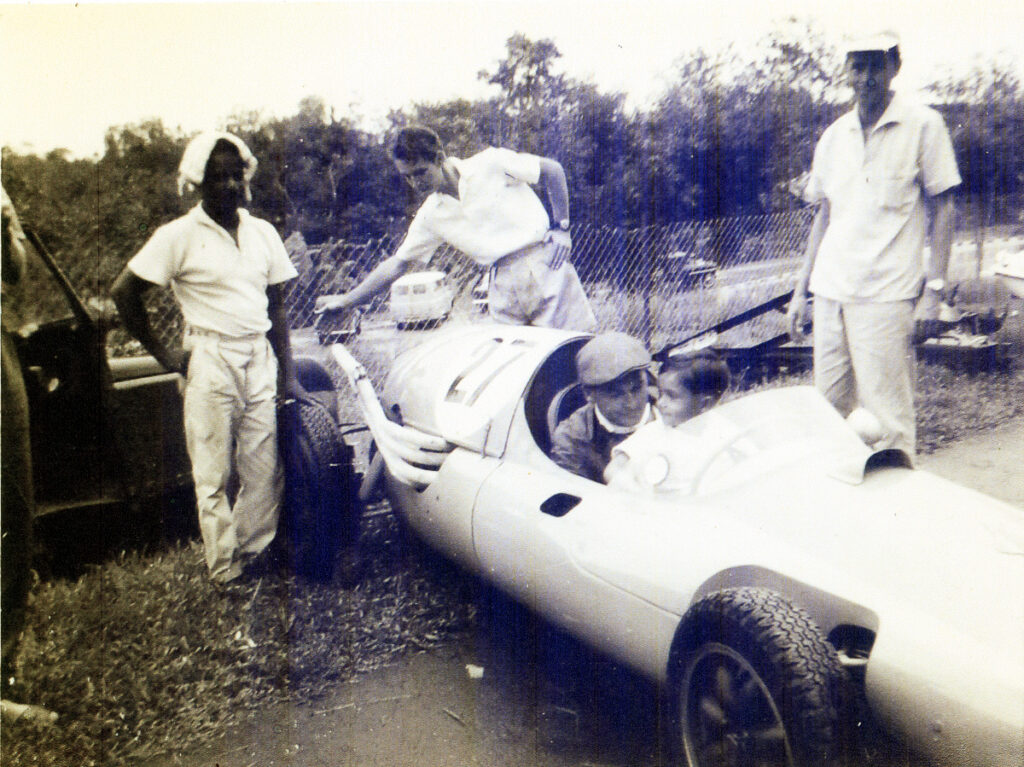
An interesting photo showing the cut out for the fuel tank without the quick release fuel cap. The photo was taken in Singapore, circa. 1962 when it was run with #27. This could have been for the National Day Commemoration Sprint at Old Upper Thomson Road.
A seized Citroën-ERSA transaxle put Cowling out of the inaugural Singapore Grand Prix, but in October that year he set FTD at the Malayan Motor Sports Club’s Kenny Hill New Tunku Abdul Rahman Speed Trial and Hill Climb. The race incorporated a 2,000-yard (1.83km) Hill Climb at the Diplomatic Enclave. They called it the New TAR Speed Trial and Hill Climb, to honour Malaysia’s first Prime Minister from independence in 1957, Tunku Abdul Rahman Putra [see RACING IN THE FEDERAL CAPITAL]. As expected, it attracted many competitors hungry for action.
The resounding success of the Singapore and Johore street races may have had something to do with all the hype. The event brought out the very best of local competitors such as Saw Kim Thiat with his ex-Heath Lotus Eleven Climax. It also attracted enthusiasts and their race cars such as Cowling in the T51, Barnwell in his newly-acquired Aston Martin DB3S, Barry Swann in his AC Ace and planter S. MacDonald in his Porsche 356 Super 90.
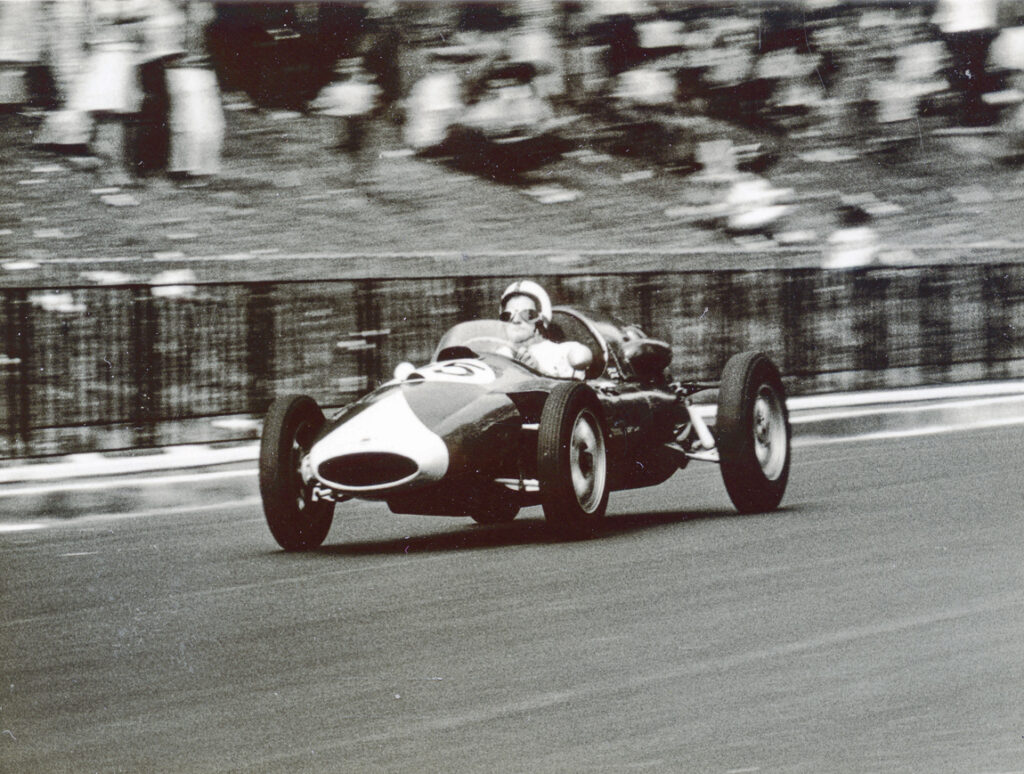
The T51 in action with Peter Cowling at the wheel.
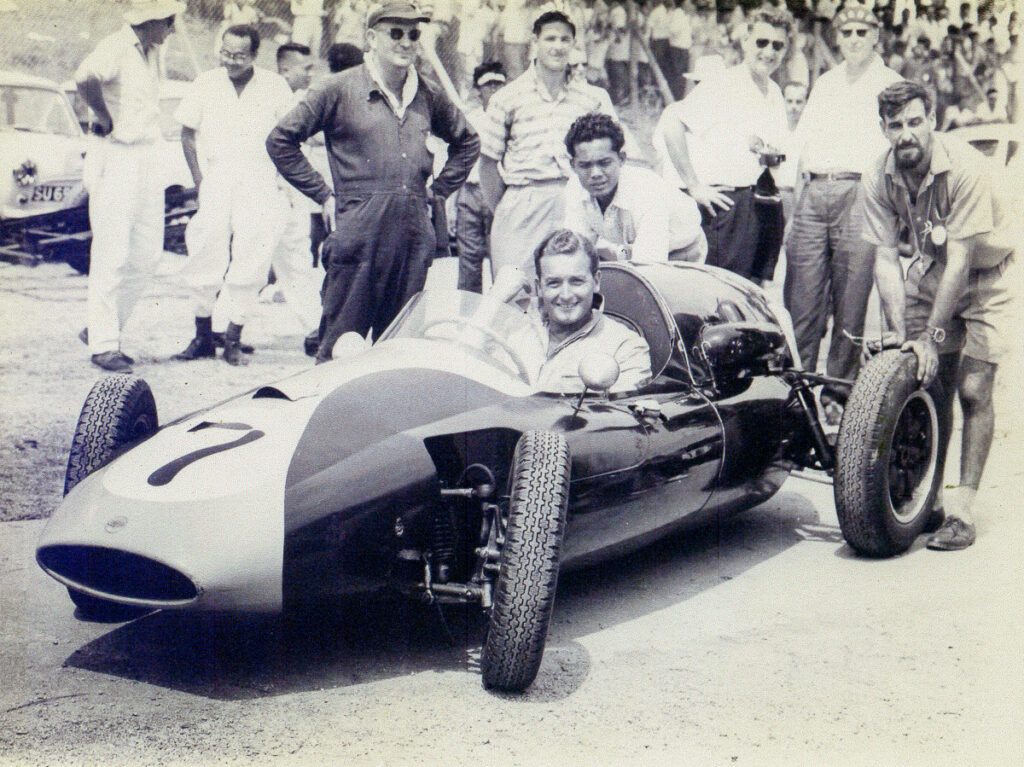
An early photo of the car after its arrival from Hong Kong. The paint scheme suggests this photo was taken during the 1961 Johore Grand Prix weekend when Peter Cowling ran #7. The gentleman in overalls with hands by his hips is Wearnes man Arthur Joseph Godfrey 8 .
Cowling next established a new course record at the Singapore Motor Club’s National Day Commemoration Sprint at Old Upper Thomson Road in June 1962, beating Yong Nam Kee’s Jaguar E-Type Roadster, John Armstrong’s Lotus Seven and Chan Lye Choon’s newly-acquired Lotus 20B Formula Junior. Not bad – FTD at the New TAR Kenny Hill Speed Trial in Kuala Lumpur on 8 October 1961, then FTD at the Old Upper Thomson Road Sprint in Singapore on 26 November 1961, and again at the National Day Commemoration Sprint at Old Upper Thomson Road on 24 June 1962. Hardly Grand Prix racing but with so little going on in the Far East, any event was a big event for racing enthusiasts. “Fast but fragile” expounded the pundits of Cowling’s T51 Cooper.
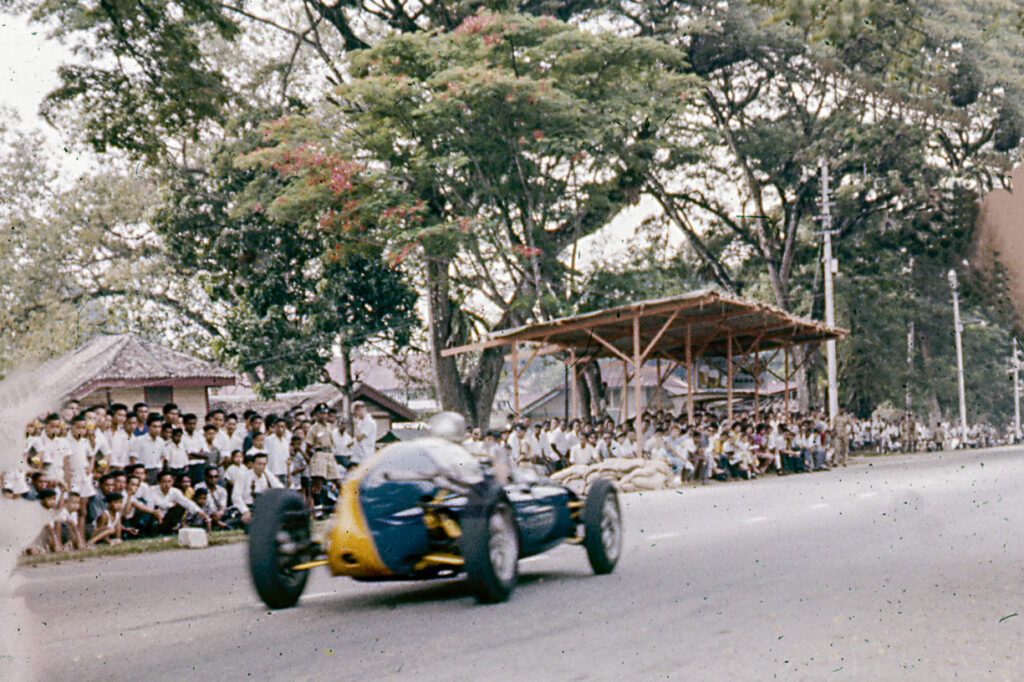
The T51 at a Malaysian sprint event in the early 1960s.
REGIMENTAL MASCOT
REGIMENTAL MASCOT: We don’t know why Cowling sold the T51 to Mike J. Cook, the regional representative for Horlicks in Singapore. Cook ran the car in the 1963 Malaysia Grand Prix, held in Singapore over Easter, finishing third to Albert Poon (Lotus 23) and Yong Nam Kee (Jaguar E-Type Roadster). He also raced it at several sprint events up country. The car was also lent to Cowling for the Royal Perak Motor Club’s Kledang Hill Climb on 19 May 1963, where he set a new course record. More was to come. On 22 September 1963, Cowling set FTD at the Perak and North Malayan Motor Club’s Vale of Temple Hill Climb in Penang. All rather lopsided against road registered sports cars.
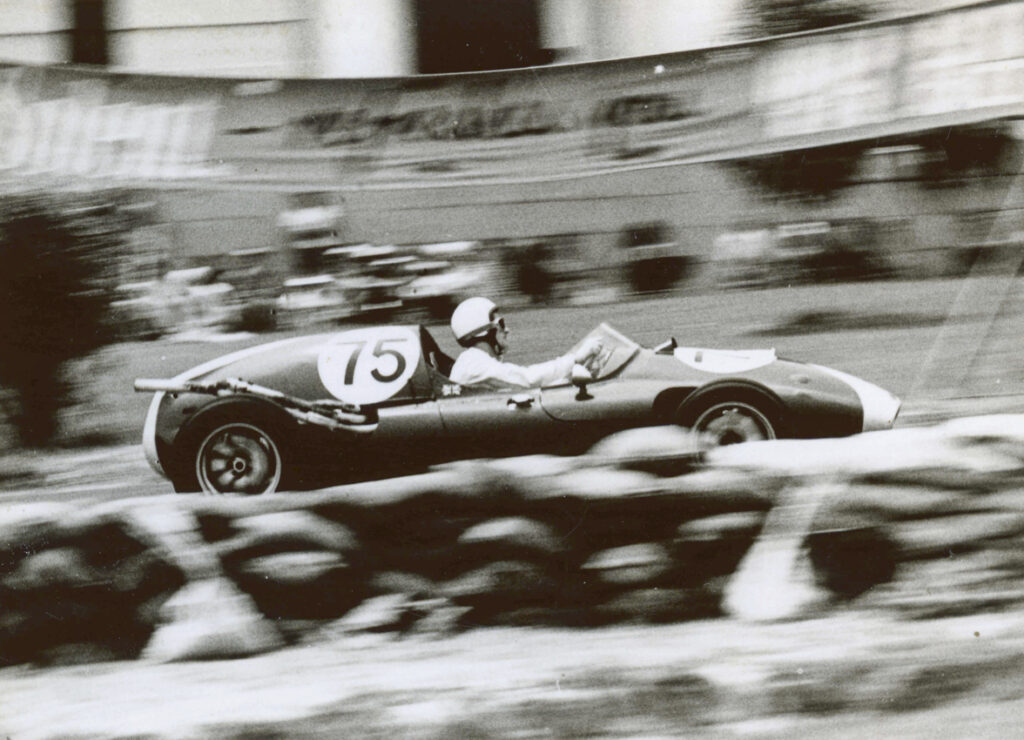
The T51 in action at the Johore Grand Prix.
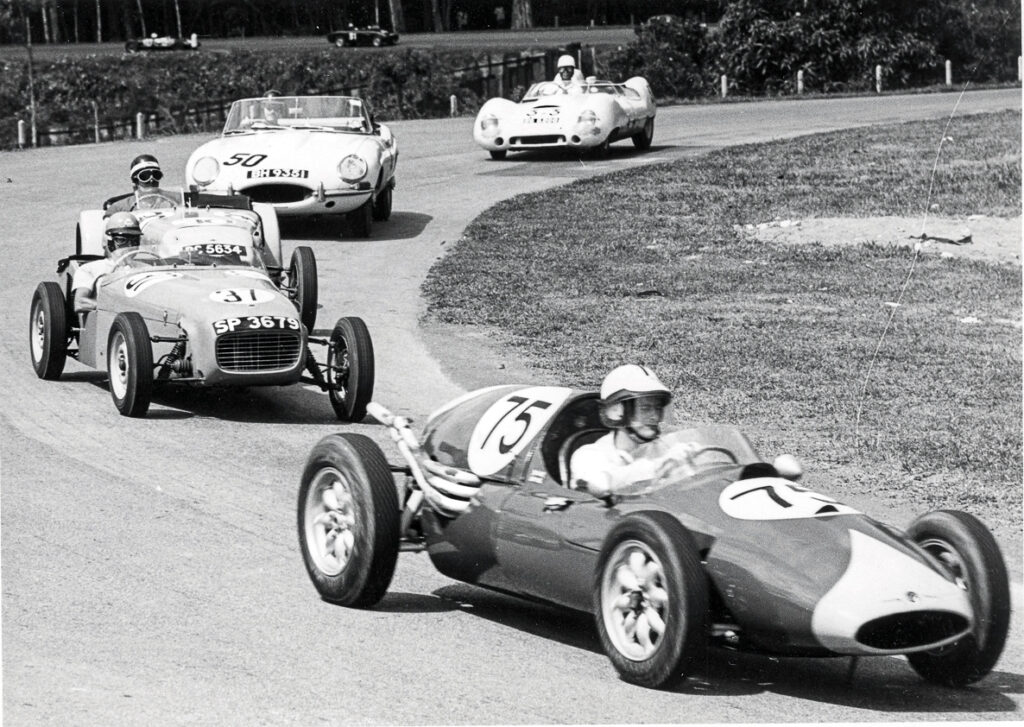
First lap of the 75-lap 1963 Malaysia Grand Prix in Singapore with the gaggle of cars taking Peak Bend. Mike Cook leads the charge in his T51 Cooper Climax (#75) ahead of Peter Leonard (Lotus Super 7), A.A. MacLaren (Lotus Super 7), Bill Cowie (Jaguar E-Type) and Saw Kim Thiat (Lotus 15 Climax).
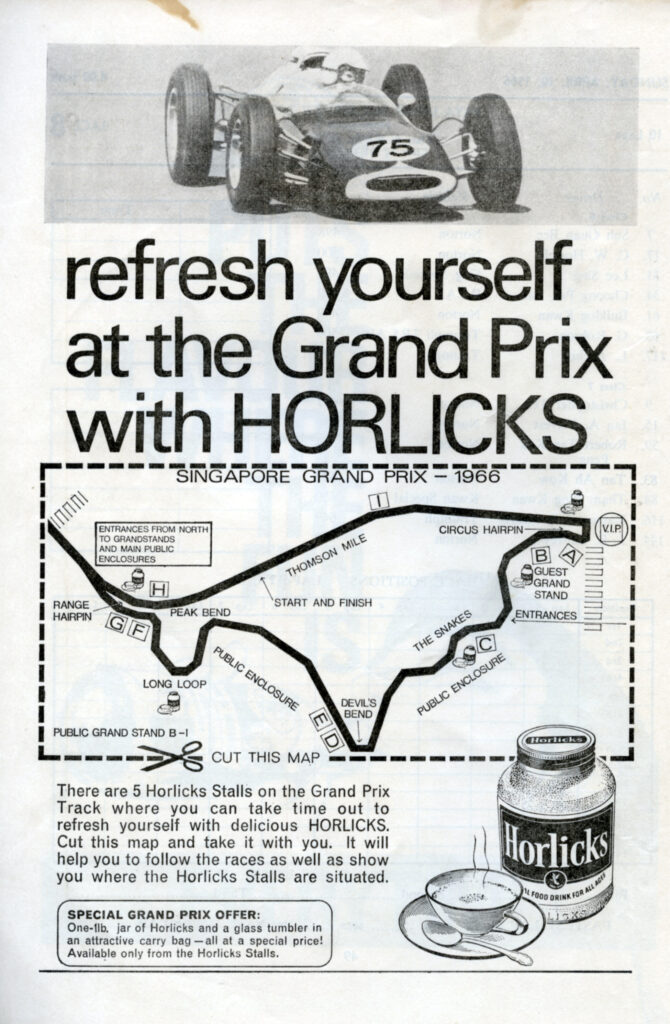
Mike J. Cook was the Horlicks representative in Singapore. This is a 1966 advert in the Singapore Motor Club’s Grand Prix program for that year…showing Cook’s preferred race number – #75.
Cook later sold the car to a 50-year-old Lt.-Colonel from the Royal Artillery, Herbert Rheims Aisne Hunt9, better known as Mike Hunt. Its new owner was already involved in the sport locally and was a founder member of the Malaysian branch of the Forces Driving Club10 (founded August 1963) and Chairman of the Singapore branch of the FDC from 1963. Its new owner promptly had the car repainted BRG. The car was entered with race number #7 though the official program didn’t feature the entry. Hunt qualified the car 24th on the grid for the Grand Prix [Note: Grand Prix was red flagged due to poor weather]. Hunt then set FTD in the Cooper at the Second Installation Sprint at Batu Gajah in Ipoh on 24 May 1964. At the Gap Hill Climb at the end of May, he finished third in the 1500cc and Under Sports/Racing Cars class but damaged the front nose of the car when he spun off on his second run. He then did what none of the other owners before him had been able to achieve, he raced it to victory at the Third Tunku Abdul Rahman Circuit Race in July 964, In heavy rain, snatched the lead from Rodney Seow (Merlyn Mk5) on lap 26 of 30 when the latter’s Merlyn developed mechanical trouble. Lord Angus Clydesdale (Lola Mk1 Special) finished second, Alan Bond (Lotus 23B) was third. Seow set FTD. It was the Cooper’s only Grand Prix victory in Asia. Interestingly, Hunt finished second overall in the Saloon & Tourers race in his Austin Mini Cooper (called the Mini-Bomb). The car carried Singapore road registration SK4892.
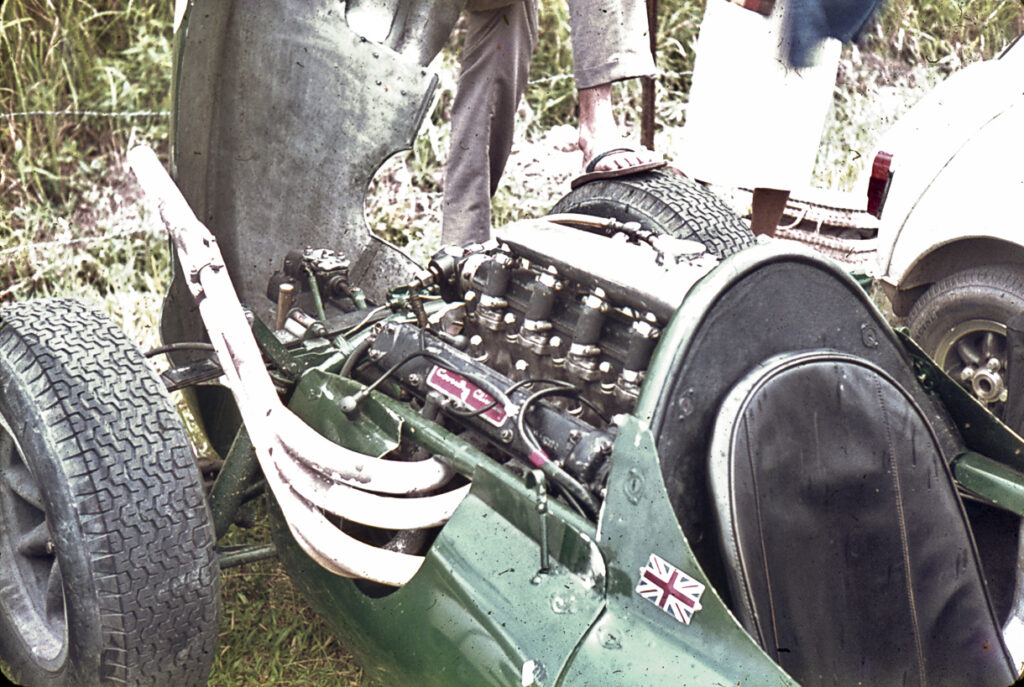
H.R.A. Hunt’s BRG T51 at the Gap Hill Climb in Singapore in May 1964. Note the Coventry Climax FPF twin cam with the camshaft (inlet cam) driven fuel pump. The gearbox a Citroën-ERSA.
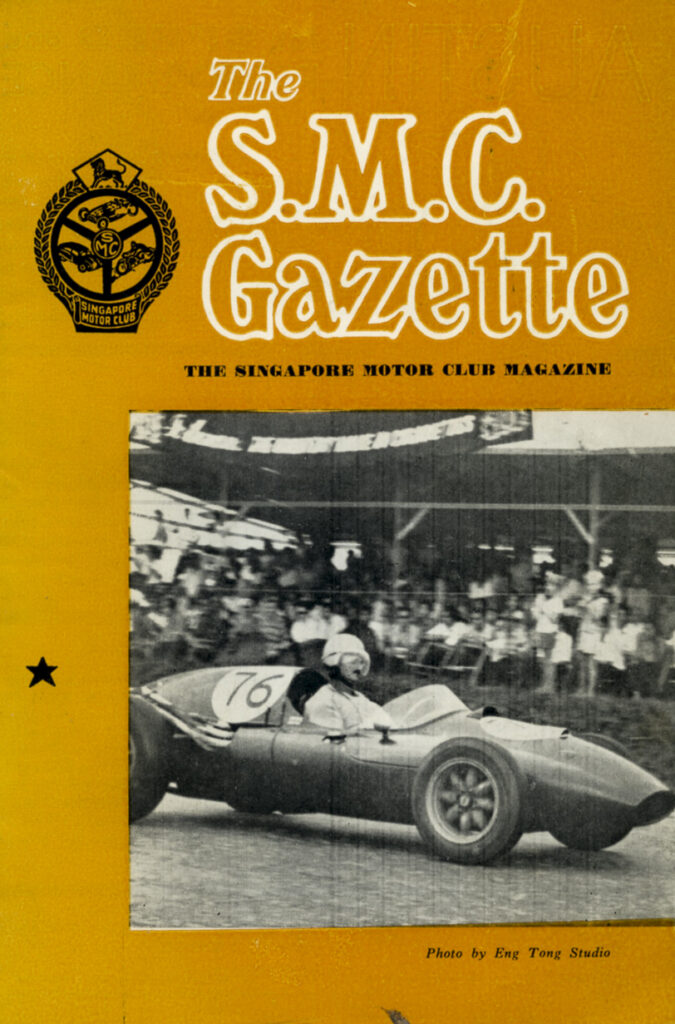
On the cover of the Singapore Motor Club Gazette.
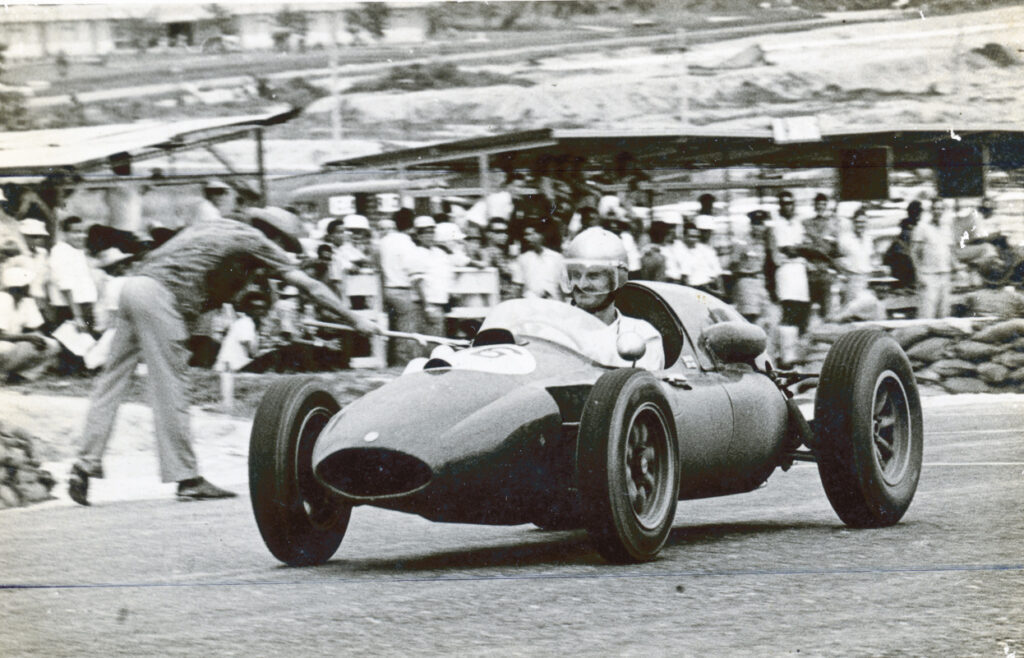
A Grand Prix win at last! Col. H.R.A. “Mike” Hunt receives the chequered flag at the 3rd Tunku Abdul Rahman (TAR) Circuit Race in 1964.
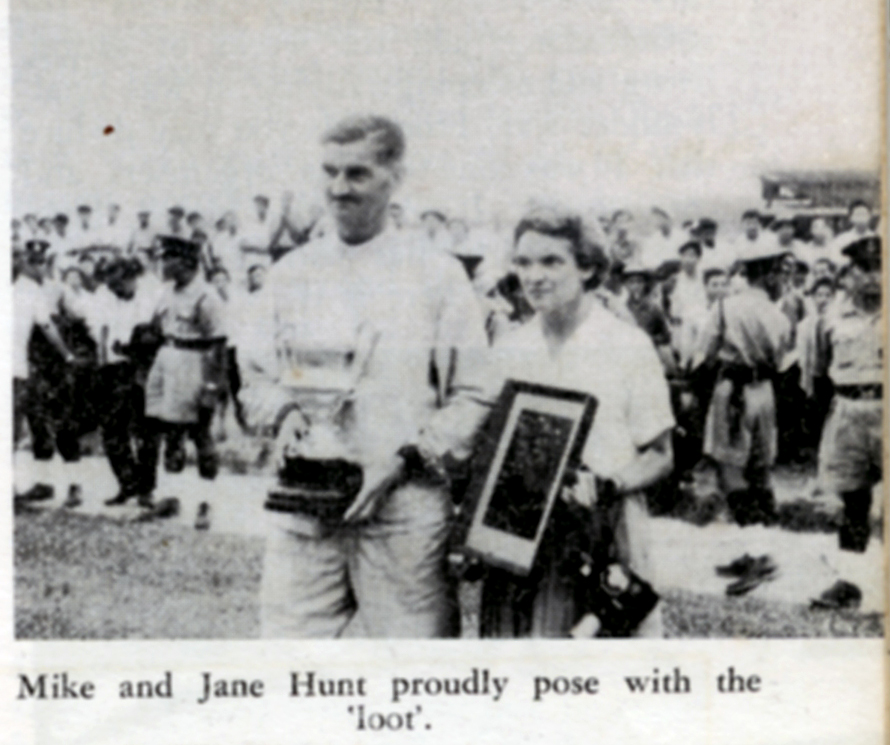
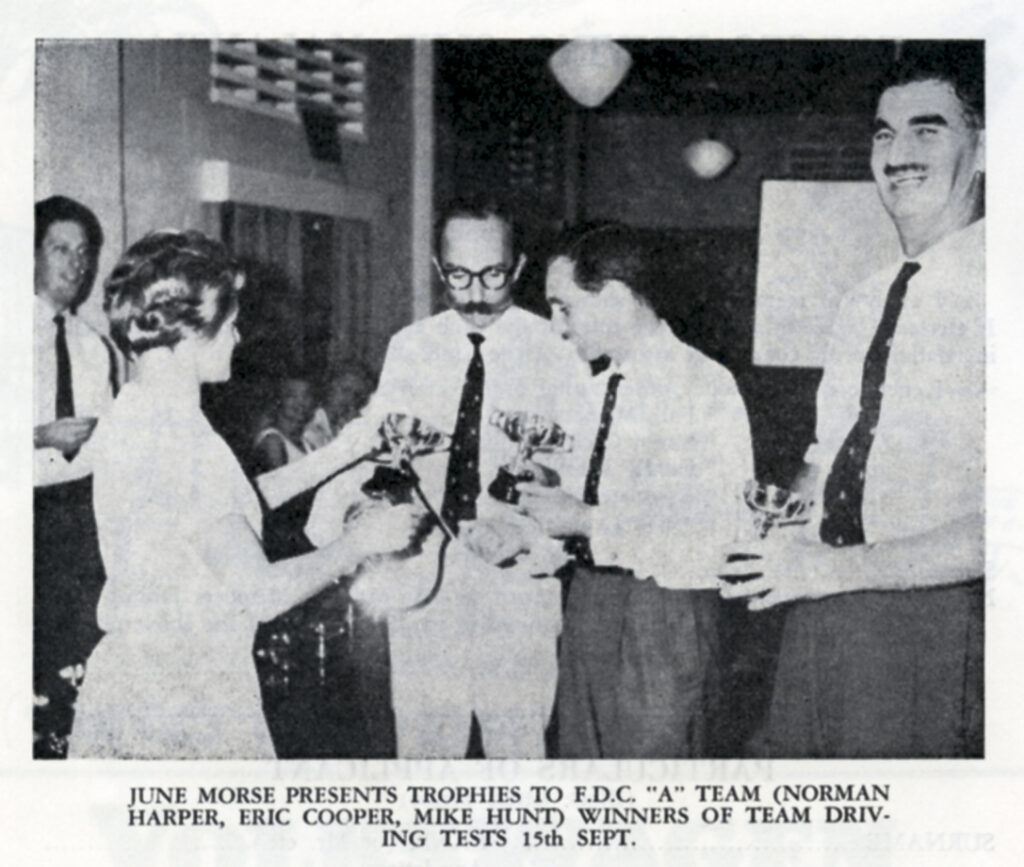
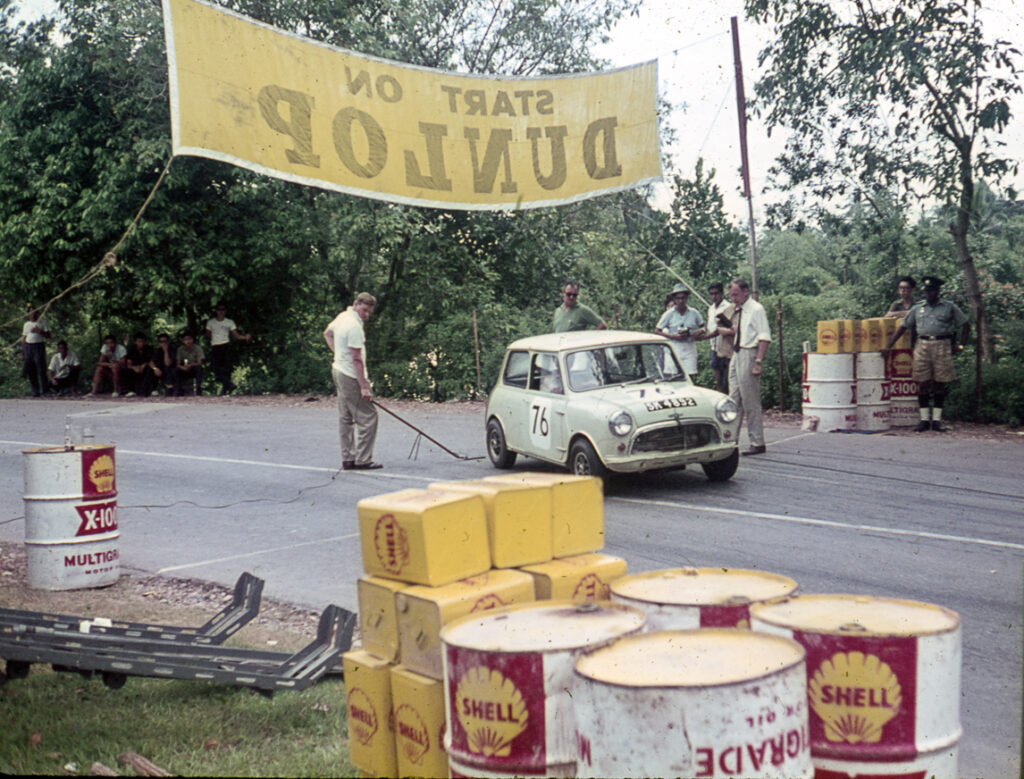
Mike Hunt entered his T51 at the 31 May 1964 Dunlop Gap Hill Climb. He also had his #76 Austin Mini Cooper S with him at the event, the car some referred to as the Mini-Bomb.
CHANGING HANDS
When Hunt and his wife returned to the UK at the end of 1964, the Mini was sold to Peng Tsu Yin while the T51 Cooper Climax car was sold to Lt-Colonel ‘Bunny’ Burnett11 of the Gurkha Rifles. Burnett, who’s primary objective in the army was to meet the Indonesian incursions head on, appears to have been linked with the 1st Battalion, 10th Queen Mary’s Own Gurkha Rifles at Terendak/Sungei Udang Camp on the Malacca coast. He was involved in operations in Tawau, Sabah until his 1/10 Gurkha Regiment left Jesselton (present day Kota Kinabalu, the capital of Sabah state) in August 1964 after eight months duty in the border areas. Burnett first took the T51 Cooper out at the 8 November 1964 Dunlop Gap Hill Climb in Singapore, racing it in the Racing Cars Unlimited class. Hunt and Cowling were also racing that weekend – in a Lotus 20B. The Singapore Motor Club’s Gazette12 makes mention of Burnett’s entry, and departure: “Amongst the first runners was E.J.S. Burnett who departed from the scene of motor racing at an even more startling speed than most, to wit by helicopter, when he was whisked away to help defend the nation once more. (Congratulations on his recent award of the D.S.O.).”
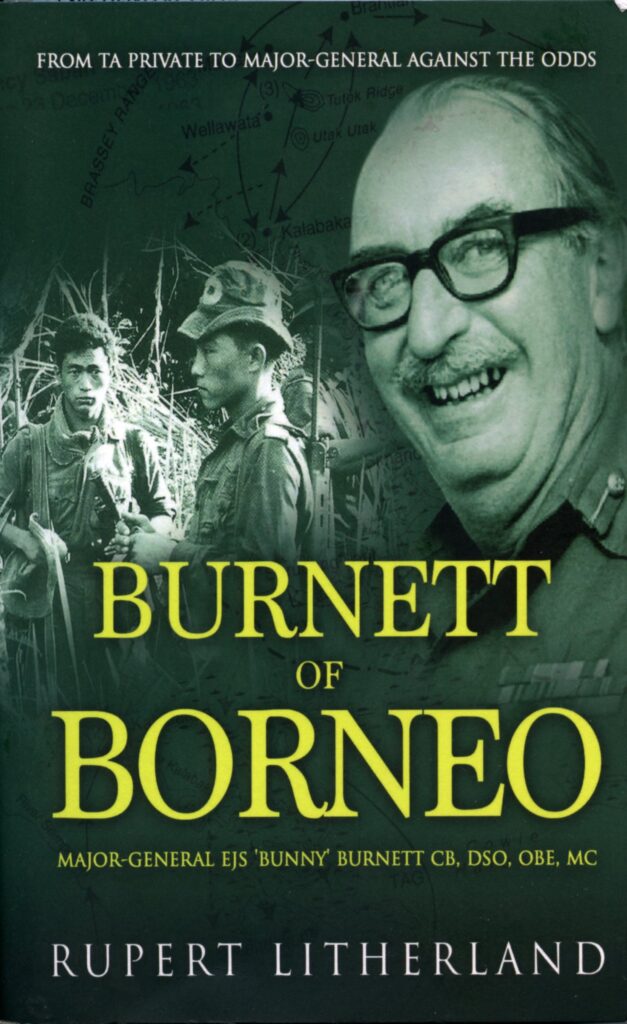
Biography of Bunny E.J.S. Burnett.
Being based in Malacca made it easier for Burnett to participate at events in Selangor as well, and on 13 December he entered the T51 at the Malayan Motor Sports Club’s (MMSC) Klang Sprint. It was a rather unsuccessful outing and his only recorded time (he had clutch trouble) was a miserable 46.8 seconds [FTD was set by Bob Usher in a Plymouth Fury @ 26.7 seconds!].
BATTLE GROUNDS
BATTLE GROUNDS: Burnett wasn’t able to race the T51 in the 1965 Malaysia Grand Prix in Singapore due to a failed clutch though it appears that he had practiced hard “on a circuit which he devised within the Battalion Lines [at his camp in Malacca].”13 However, he had the necessary repairs done in time for the Fourth Tunku Abdul Rahman (TAR) Circuit Race in Petaling Jaya that July, finishing fourth against likes of Hong Kong’s star racers Albert Poon and Steve Holland in Lotus 23s. The Cooper was then sold to Lt. Christopher Hubert Gathorne Crabtree14 of the 2/7 Gurkhas Regiment in Malacca, keeping the car firmly in military hands. It appears that young Crabtree, then aged 25 and new to Malaysia, had only joined the Forces Driving Club (Malaysia) in October 196515, having been promoted from Officer Cadet16 to Lieutenant on 16 January 1965 (Brigade of Gurkhas, 7 Gurkha Regiment). Crabtree’s battalion, which was also based at Terendak/Sunjei Udang Camp, relieved Burnett’s 1/10 Gurkha Rifles in early September 1965. The T51 changed hands shortly after, as noted in the Forces Driving Club Malaysia November 1965 edition.17 Prior to his posting to Malaysia, Crabtree had some racing experience at British Automobile Racing Club events in 196418, albeit in an MGB.
Crabtree was expected to enter the car for the November 28th Dunlop Gap Hill Climb in Singapore. The 7GR’s heavy involvement in the Borneo Confrontation that was fought out in Sabah and Sarawak may have thwarted the officer’s racing interests because there is no entry for the T51 at the Gap, nor at the 26 September 1965 Seremban Sprint held earlier. The T51’s only appearance, as far as this writer has been able to determine, was over Easter in 1967, at the Singapore Grand Prix. By then it would have been way past its shelf life as a race car, competing against newer Twin Cam Brabham BT18s and Merlyn Mk10s. Crabtree may also have been a bit rusty if he wasn’t able to get track time in the car. In the Singapore Grand Prix, Crabtree doesn’t appear in the list of cars that made Saturday’s (25 March 1967) top 20 qualifying times but it the Grand Prix it appears that he was black flagged and disqualified, the Singapore Motor Club Gazette’s “Chatterbox” revealing that “the old Cooper number 73 badly baulked both of them [Philip Seow and Brian Foley in an Elva and Mini respectively]…This particular car although disqualified and given the black flag continued to run and was a menace to all and sundry.”
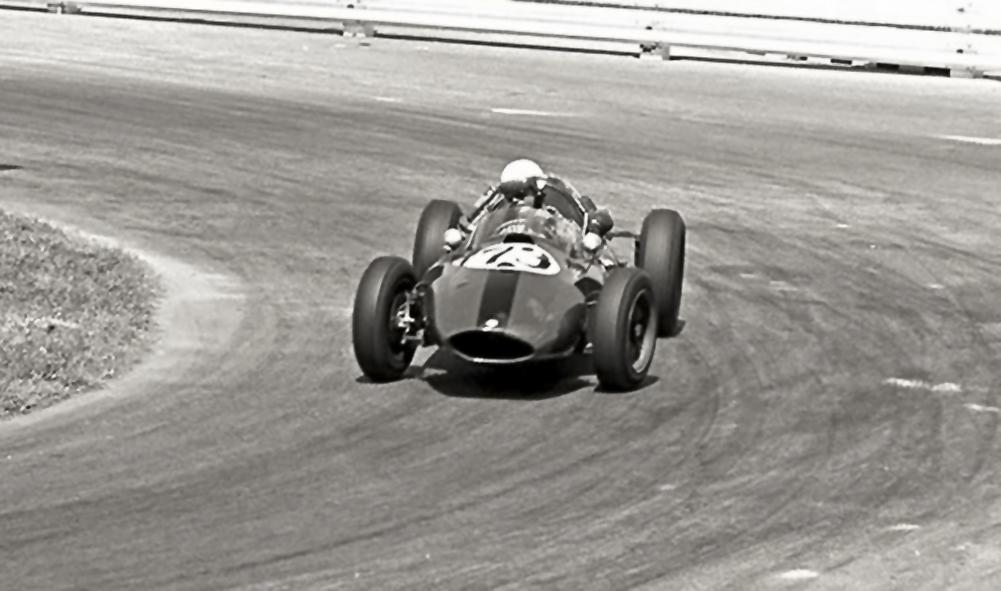
Christopher Crabtree was black flagged in the 1967 Singapore Grand Prix.
And here, our thread seemingly ends; six owners over eight years of racing in the Far East and South East Asia and an unsurpassed record of FTDs at Sprints and Hill Climbs…but just one single Grand Prix win. What happened to the T51 after the debacle of the 1967 Singapore Grand Prix? There was no entry for the Johore Grand Prix (2-3 September 1967), nor for the first Batu Tiga permanent circuit race (9-10 September 1967). And nothing in 1968 either. The car simply vanished from the South East Asian racing scene. Does Christopher Crabtree hold the key to its subsequent history? Watch this space.
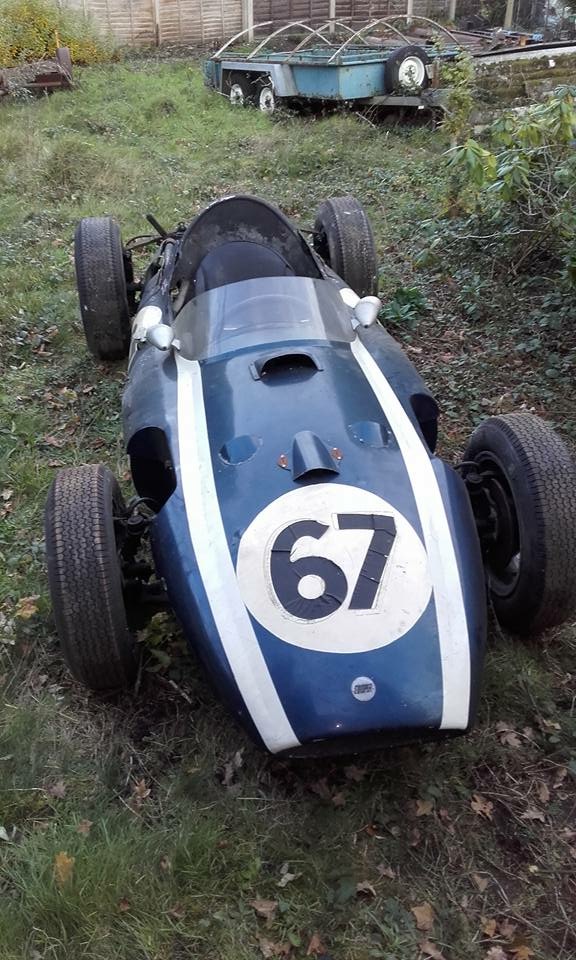
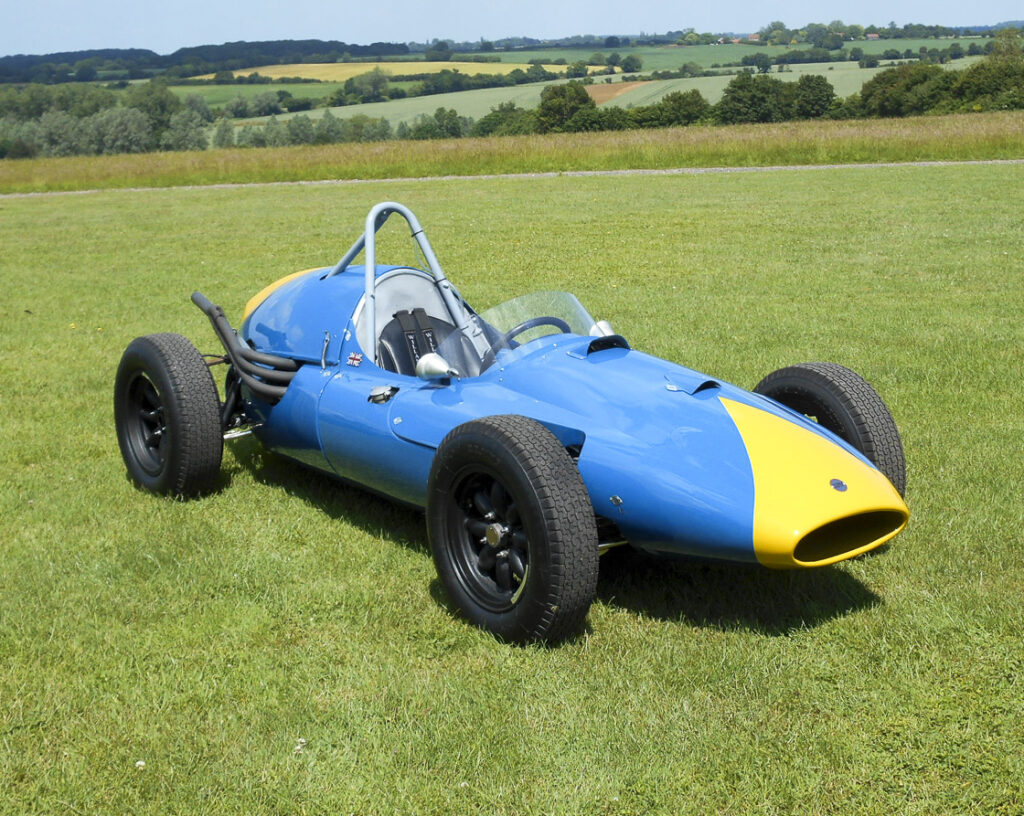
POSTSCRIPT
POSTSCRIPT: Not too many years ago Luxembourg-based Paul Longbottom was offered the T51 as a “barn find”. He was told it was Formula 2 Cooper and on further investigation, discovered that the body and shock absorbers held traces of blue-yellow paintwork. The car was complete; all round disc brakes, twin long range Grand Prix fuel tanks, adjustable shock absorbers and a pair of twin choke DU6 SU carburettors. It was a veritable time warp. But that too is another story, one for a proper motor sports magazine writer.
Chronology of the T51’s racing in the Far East
18 September 1960 – Hong Kong Sek Kong Sprint (HKMSC) – Ron Hardwick (1475cc)
6 November 1960 – Macau Grand Prix – Ron Hardwick, AC Bristol [No Cooper single-seater entered]
11 December 1960 – Hong Kong Sek Kong Slalom (HKMSC) – Ron Hardwick (1482cc) – FTD. Appears to be the first time the car is listed in an HKMSC event
7 January 1961 – Hong Kong Golden Hill Hill Climb (HKMSC) – Ron Hardwick – FTD
22 January 1961 – Hong Kong Wong Nei Chong Hill Climb (HKMSC) – Ron Hardwick – FTD
12 February 1961 – Hong Kong Golden Hill Hill Climb (HKMSC) – Ron Hardwick – FTD and Course Record
26 February 1961 – Hong Kong Golden Hill Hill Climb (HKMSC) – Ron Hardwick – FTD
5 March 1961 – Hong Kong Sek Kong Sprint (HKMSC) – Ron Hardwick – FTD
16 April 1961 – Forces Motoring Club Spring Sprint – RASC Nursery Circuit, Sembawang. No entry for the T51 Cooper Climax.
23 June 1961 – Singapore Free Press Grand Prix Supplement, 23 June 1961. Pg.14. The Cooper Climax driven by Peter Cowling for the 1961 Johore Grand Prix. “He bought it from Ron Hardwick of Hong Kong and took delivery of it in Singapore only recently. It is a single seater road racer. In last year’s Grand Prix Cowling won the Sports Cars class (1101 to 1500cc) in his MGA.”
25 June 1961 – Johore Grand Prix – #7 Peter Cowling – 1498cc – FTD @ 1:49.4 on Lap 24. Black flagged on lap 48 of 70 due to outside assistance following crash with sandbags (just before lap 24).
23 July 1961 – Sembawang Summer Sprint, RASC Nursery Circuit (Forces Motoring Club). #29 Peter Cowling – in his Mk IV Cooper JAP 1098cc, not the T51
17 September 1961 – Singapore Grand Prix – #7 Peter Cowling (DNF, 4th lap)
8 October 1961 – Kuala Lumpur (Malaysia) – New Kenny Hills Speed Trials – #7 Peter Cowling – FTD
22 October 1961 – Dunlop Gap Hill Climb – #7 Peter Cowling (entered in his 1098cc Cooper Mk IV instead of the T51 Cooper). FTD
26 November 1961 – Upper Thomson Road Sprint – Singapore – #29 Peter Cowling – FTD set in the 1098cc Mk IV Cooper JAP. No entry for the Cowling T51 Cooper Climax.
11 February 1962 – Dunlop Gap Hill Climb – #29 Peter Cowling (not the T51 but his Mk IV Cooper JAP).
11 March 1962 – Kuala Lumpur – KL National Sprint Championship – Ian Barnwell raced the T51, Unlimited Racing Cars class win.
23 April 1962 – Malaysia Grand Prix (Singapore). #27 Peter Cowling. FTD on Lap 16 @ 2:30.6. Black flagged for entering the pits in the wrong direction. Car listed as a Cooper F1 in the official program.
24 June 1962 – Singapore – National Day Commemoration Thomson Road Sprint – Course altered so all records set before 24 June 1962 not applicable as gauge. #27 Peter Cowling – FTD @ 51.06sec (car listed with 1476cc engine in the program)
5 August 1962 – Singapore Gap Hill Climb – #27 Peter Cowling – listed with 1476cc engine. Cowling entered the T51 in Class 21 – Sports/Racing Cars 1500cc and under (a new class at the Gap Hill Climb) as well as in Class 23 – Racing Cars – Unlimited (also a new class at the Gap Hill Climb).
26 September 1962 – Straits Times advert For Sale (pg.13) – 1.5 Cooper Climax in faultless condition comes with spares and trailer. Lap record holder Johore and Singapore Grand Prix. P.O. Box 105 Rengam, Tel. 217. Peter Cowling was then based in Rengam (also Renggam) in the state of Johore.
20 January 1963 – Forces Motoring Club New Year Sprint, RASC Nursery Circuit – Sembawang. No entry for Peter Cowling/Mike J. Cook in the T51 Cooper Climax.
10 February 1963 – Singapore Motor Club Old Upper Thomson Road Sprint. #75 Mike J. Cook (#75) listed with 1476cc motor.
15 April 1963 – Malaysia Grand Prix (60 laps – 180 miles). #75 Mike Cook 1475cc – finished 3rd in the Grand Prix, behind Albert Poon (Lotus 23) and Yong Nam Kee (Jaguar E-Type Roadster)
Note: Mike Cook then went on leave and left the T51 for Cowling to race. Cowling raced it till just before the Johore Grand Prix on 31 August 1963 – collecting four FTDs: Kulim (Namazie Sprint), Kledang Hill Climb in Ipoh, Seremban Sprint and Singapore Gap Hill Climb (see below).
19 May 1963 – Royal Perak Motor Club Kledang Hill Climb. Peter Cowling (Mike Cook now owned the car). Course record – Cowling broke Saw Kim Thiat’s record by 2 seconds.
** June 1963 – AAS Highway Magazine had FOR SALE Arthur Owen’s Cooper Climax 1960 which he used in the 1963 Malaysia Grand Prix (Singapore). Asking price SGD$7,000. Contact person was the SMC’s President, Sir James N. Lockerbie at 12 Adam Park – where the car was kept.
2 June 1963 – Dunlop Gap Hill Climb. #20 Peter Cowling – FTD set in Racing Cars Unlimited class at 47.62sec. Engine listed as 1476cc. Ian Barnwell was entered to drive Cowling’s #29 Mk IV Cooper JAP but entry was scratched, though it appears that Bill Wyllie drive the #29 Mk IV Cooper in the Sports/Racing Cars 1500cc and Under class (class win).
14 July 1963 – Seremban Half-Mile Sprint – Peter Cowling – Unlimited Class win – FTD 23.34sec.
Interestingly, the Sembawang Races (RASC Nursery Circuit, Singapore) were held on 14 July 1963, though Peter Cowling chose to attend the Seremban Sprint instead, even though he held the Racing Cars Unlimited record for both the Racing Cars Up to 1100cc and Racing Cars Unlimited at the Sembawang RASC Nursery Circuit (which he set on 23 July 1961 in his Mk IV Cooper).
31 August-1 September 1963 – Johore Grand Prix (70 laps). #75 Mike J. Cook – 3rd Overall
22 September 1963 – Perak & North Malayan Motor Club Vale of Tempe Hill Climb – Peter Cowling – FTD
26-27 October 1963 – Royal Perak Motor Club Installation Sprint. Robert Lee – FTD. Cooper T51 Climax. Second T51 Cooper in South East Asia – ex-Arthur Owen car F2-6-59
16-17 November 1963 – MMSC Tunku Abdul Rahman Circuit Race – Diplomatic Enclave. Two miles 308 yards. 35 lap main race. Entry shows #47 – Robert Lee (P&NMMC) in Cooper Climax 1495cc. This was the ex-Arthur Owen T51 Cooper, chassis F2-6-59. No entry for the Mike J. Cook T51 Cooper Climax although two future owners were present – Lt.-Colonel H.R.A. Hunt (#76) in his Mini Cooper S and Colonel E.J.S. Burnett (#78) in his Daimler SP250
28 November-1 December 1963 – Straits Times classified advert. Michael Cook wishes to sell his Formula II Cooper Coventry Climax 140 BHP Twin Cam FPF. Recently overhauled, 3rd Johore, Malaysia (Singapore) GPs and an ideal car for anyone wishing to take up the sports seriously. PO Box 11, Singapore
19 January 1964 – Singapore Old Upper Thomson Road Sprint – ¾ mile. No entry for the T51 Cooper. Mike Cook had acquired Chan Lye Choon’s Lotus 20B and was using it in this event instead.
29-30 March 1964 – Malaysia Grand Prix (Singapore) – #7 H.R.A. Hunt. The official program has a blank under the entry for 1460cc Cooper Climax. H.R.A. Hunt qualified 24th on the grid for the Grand Prix. Note: Grand Prix red flagged due to poor weather.
[Mike Cook disposed of the T51 sometime in March 1964, possibly after the 1964 Malaysia (Singapore) Grand Prix program had gone to print. Hunt’s entry (#76) was listed in the newspaper supplement (Straits Times, 27 March 1964) as an AC Cobra (4.3-litre). Rumour of the AC Cobra’s arrival surfaced in the Forces Driving Club Malaysia newsletter (February 1964).
24 May 1964 – 2nd Installation Sprint, Ipoh. H.R.A. Hunt – FTD.
31 May 1964 – Singapore Gap Hill Climb. #76 H.R.A. Hunt [engine listed as 1490cc]. Hunt also entered his #76 Austin Mini Cooper S (1070cc).
Hunt was 3nd to Lee Han Seng (Lotus 22) and Mike Cook (Lotus 20B) in the Sports/Racing Cars 1500cc and under class. Forces Driving Club June 1964 Monthly Newsletter notes that “Mike Hunt spun off on his second trip up the hill but did little damage other than a large dent on the nose of his Cooper.” Hunt also raced his Austin Mini Cooper in the Improved Touring Carss class, winning the 851-1300cc class with a new class record.
5-6 July 1964 – Tunku Abdul Rahman Circuit Races – Petaling Jaya street circuit. #76 – H.R.A. Mike Hunt. 1490cc Climax – 1st overall [30 lap race]. Hunt also raced his LHD XK140 FHC in the Sports Cars race (same race number #76) and his Austin Mini Cooper (second overall in the Saloon & Tourer race).
9 August 1964 – Forces Motoring Club Summer Sprint – Sembawang 800 yard course at Royal Naval Air Station, HMS Simbang, Singapore. H.R.A. Hunt entered his Austin Mini Cooper and won the Improved Series Production and GT Cars class (1600cc and Under) while E.J.S. Burnett won the 2001-4000cc class in his Daimler SP250. Hunt also win the Unlimited Improved Series Production and GT class with Burnett finishing second. It doesn’t appear that the T51 Cooper Climax attended.
27 September 1964 – MMSC Seremban Sprint – Rahang Road. Mike Cook set FTD in his Lotus 20B @ 21.38 seconds. T51 Cooper Climax not featured in the results.
8 November 1964 – Dunlop Gap Hill Climb. #73 – E.J.S. Burnett entered. Burnett set a 49.47 second time in the Racing Cars Unlimited class. FTD was set by Rodney Seow in a Merlyn Mk5/7 @ 43.35 seconds. Also entered were H.R.A. Hunt (Lotus 20B) and Peter Cowling (Lotus 20B).
17 November 1964 – H.R.A. Hunt and wife Jane return to UK19. T51 Cooper Climax sold to E.J.S. Bunny Burnett, Gurkha Rifles.
13 December 1964 – MMSC Klang Sprint. E.J.S. Burnett entered. Single run only. Clutch trouble.
11-12 April 1965 – Malaysia Grand Prix (Singapore). #73 – E.J.S. Burnett. 1494cc. Entry Scratched due to a burnt out clutch.20
3-4 July 1965 – Tunku Abdul Rahman Circuit Races (Petaling Jaya). #73 – E.J.S. Burnett. Finished 4th in the Grand Prix.
25-27 March 1967 – Singapore Grand Prix. #73 Christopher Crabtree. 1476cc engine. Disqualified.
30 April 1967 – Dunlop Gap Hill Climb. FTD and course record set by Lee Han Seng (Brabham BT18) @ 41.09 seconds. Cooper T51 not featured in the results.
Words by Eli Solomon.
Acknowledgements: With thanks to Peter Jackson of the Cooper Car Club, to Paul Longbottom for restoring theT51 back to its former glory and Peter G. Cowling for his recollections of racing in the Far East. Thanks also to Sandy Finucane for helping to identify her father A.J. Godfrey in one of the early photos of Peter Cowling in the T51, shortly after it arrived from Hong Kong.
RMA Resource Center
Resources:
Hong Kong Motor Sports Club Yearbooks 1959-1961
Newsome, Philip: Colour & Noise, 1960 – The Best Yet. Studio Publications, 1993
Litherland, Rupert. Burnett of Borneo. New Generation Publishing, 2020.
Nye, Doug. Cooper Cars. Motorbooks, 2003.
Owen, Arthur. The Racing Coopers. Cassell, 1959.
Wright, Terry. Power Without Glory – Racing the Big-Twin Cooper. Loose Fillings Sydney, 2015.
Solomon, Eli. A Cocktail For Cooperholics. Rewind Magazine, Issue 015, July 2013.
Solomon, Eli. Racing Returns To The Federal Capital. Rewind Magazine, Issue 023, July 2015.
Solomon, Eli. Tales From The Far East – A Cooper Coup. Rewind Magazine, Issue 027, March 2016.
Solomon, Eli. Lyons’ Cats in Asia. Rewind Magazine, Issue 031, November 2016.
Solomon, Eli. Snakes & Devils – A History of the Singapore Grand Prix. Marshall Cavendish, February 2008.
Forces Motoring Club (Singapore) – various issues.
Forces Driving Club (Malaysia) – February 1964.
Singapore Motor Club Gazette – various issues.
Highway Magazine, Automobile Association of Singapore, June 1963.
RMA Resource Center – Singapore and Malaysia Grand Prix program collection.
RMA Resource Center – Singapore and Malaysia club racing program collection.
RMA Resource Center – Unpublished manuscript of Lost Circuits Volume 1.
Appendix 1
The story of T51 F2/10/57 begins in March 1957 when the Cooper Car Company set up a Driver Training Division at the Brands Hatch circuit in West Kingsdown, Kent. The idea was to give opportunity to talented drivers who were otherwise unable to find a way to prove their ability in the increasingly expensive world of motor racing. The school was instantly overwhelmed [the school operated between 1957 and 1961].
Initially, the school used two then current Formula 2 type cars (T43) painted light blue. The cars were fitted with modest power single cam Coventry Climax FWA engines instead of the F2 twin cam FWB. The fleet of training cars included a two seater version of the Cooper Bobtail for initial driver familiarisation (Peter Jackson of the Cooper Car Club informs me that this particular car has an interesting story of its own).
Given that the school was inundated with drivers of mixed ability/potential there were so many prangs and subsequent major repairs that F2/10/57 [T43] was eventually relieved of playground duties and scrapped. The chassis plate lived on and attached to a new Formula 2 Cooper (a T51).
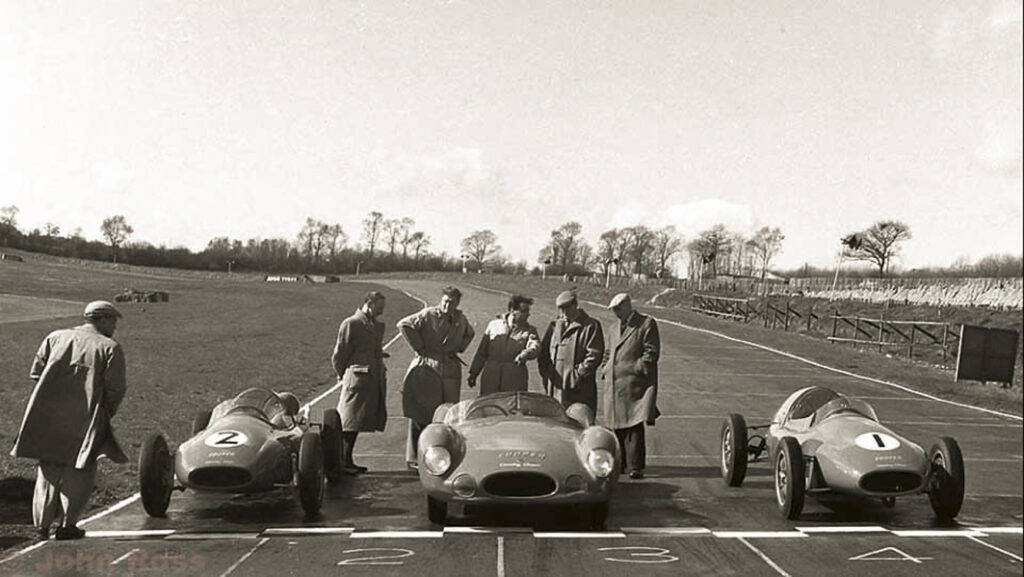
The two T43s and the twin seat Cooper Bobtail at the official opening of the Cooper Driver Training School at Brands Hatch in 1957 school. One of these T43 F2 cars carried chassis plate F2/10/57. This chassis plate lives on in the T51 featured in this article. Photos and text provided by Peter Jackson.
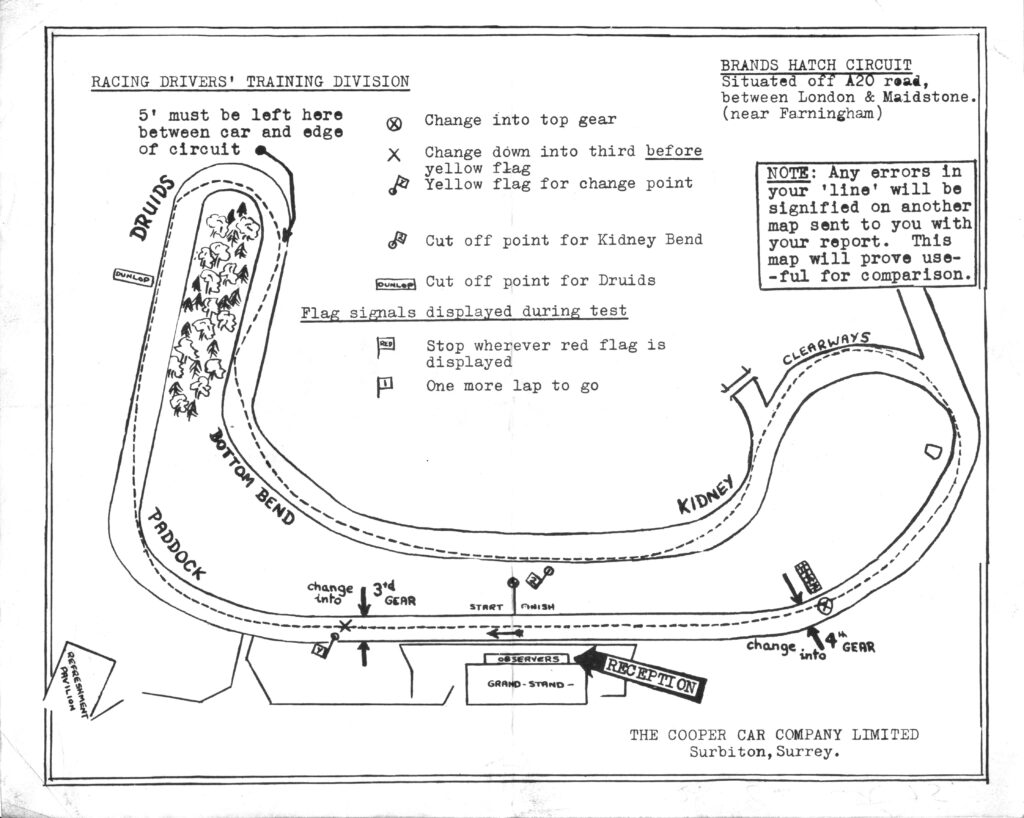
The Cooper Car Company’s Drivers’ Training map of the Brands Hatch Circuit. Photo courtesy of Peter Jackson.
End of Appendix 1
Footnotes
- John Cooper (17 July 1923 – 24 December 2000), owner of the Cooper Car Company.
- Lyons’ Cats in Asia. Rewind Magazine, Issue O31, November 2016.
- In Hong Kong, K.Y. Cheung purchased one of Jaguar’s unsold D-Types (XKD 559) via importers Gilman & Co. as a road registered XKSS (XKSS 757, registration XX120). Cheung used it in Hong Kong in 1959 before selling it to Hong Kong resident and Cathay Pacific pilot Ron Hardwick. Hardwick raced it to victory in the 1959 Macau Grand Prix. Gilman Motor’s service manager Martin Redfern later purchased the XKSS and won the Macau Grand Prix with the car in 1960, having modified it to the point where it looked more like a D-Type in appearance. It was later owned by L.C. Kwan and was finally exported to the UK in 1966.
- Interestingly, for the 1961-1965 Formula 1 seasons, engine capacity was capped at 1.5-litres, effectively permitting the T51 FPF Climax to race at Formula 1 events. This may help explain why the car was occasionally referred to as a Formula 1 Cooper in Asia.
- For the 1960 Grand Prix, the Automovel Club de Portugal in Lisbon mandated that the race would be for sports and GT cars only, with a concession to certain ‘Specials’ that had participated in Macau previously. [see Newsome, Philip: Colour & Noise, 1960 – The Best Yet. Studio Publications, 1993]
- ‘Bill’ James George Milne Ferguson [b. 27 April 1912, Chemor (also known as Chumor), Perak, Malaysia to James Scott Ferguson [23] and Nellie Milne [23]. The Ferguson family lived at the Changkat Kinding Estate (also known as Kinding Rubber Estate Syndicate), located 2.5 miles from Chemor in the Kinta District.
- Bill Ferguson’s Cooper Mk IV car, chassis 10/13/49. Ferguson saw the car at the 100-mile Silverstone road race (driven by Alan Ripon) in 1950 and eventually purchased it for £500. The car was maintained by Wearne Brothers’ mechanic Stan Moore in Kuala Lumpur and by Ferguson’s own mechanic, Choy Yee Ming. The car made its Malayan debut at the Lornie Kilo, 29 April 1951. The car changed hands a number of times before going to Francis Jan Bussell in Singapore. Bussell put it up for sale in September 1959 (with 998cc JAP motor and a trailer and priced at S$2,200). Peter Cowling first appeared in this car at the 1960 Johore Grand Prix 20-21 February 1960 (#74, with 499cc motor).
- Arthur Joseph Godfrey (b. 6 April 1928 – d. 21 November 2013), affectionately known as ‘Blue’, joined Wearne Brothers in September 1951. He progressed to the position of Assistant Engineer in Kuala Lumpur handling the company’s British and Ford (Britain) vehicles. He later rose to various executive positions before becoming Manager of Wearne Brothers in Malacca. He left Malaysia to return to Western Australia in November 1970.
- Herbert Rheims Aisne Hunt [b. 16.9 1914, Dublin, Ireland; d. 25.3. 2001 in Gorbio, Alpes-Maritimes, France]. Hunt was 50 years old when he left Malaya in November 1964, rank Lt.-Colonel, Royal Artillery. He was promoted to LTC on 3 November 1960, with seniority to 4 July 1960 and was stationed in Malaya as early as April 1963. He shipped over his Jaguar XK140 FHC (registration 381BYS) and retained the car while in Malaya. He was appointed to the Special List, 14 January 1965, Royal Regiment of Artillery – Army Regular. Hunt and his wife Jane left Malaya and returned to UK on 17 November 1964.
- Background on the Forces Motoring Club and the Forces Driving Club: The Forces Motoring Club (Singapore Branch) was formed on 23 August 1956 (the FMC itself was formed in the UK in 1953). The Forces Motoring Club (Malaysian Branch) was formed in October 1957. The Forces Driving Club (Malaysian Branch) was registered in early May 1964, while the Forces Motoring Club was dissolved, the FDC having taken over the activities of the FMC. In August 1963, the Forces Motoring Club (Singapore Branch) was wound down and the Forces Driving Club was established to take over the activities of that club.
- Lt. Colonel Edward John Sidney ‘Bunny’ Burnett, MBE [b. 8 February 1921 d. 19 November 1978], was based in Malaysia from as early as April 1950, part of 2/10 Gurkha Regiment that had been deployed to Malaya from Hong Kong. He was posted to the British Gurkha HQ in Barrackpore, India, in October 1952. He returned to Malaya in December 1955, to Regimental Duty with 2/10GR as the OC Support Company at Majedee Barracks, South Johore. In March 1957 he returned once more to India, this time for duty with the British Embassy in Kathmandu. He returned to Malaya circa 1959. In June 1962 he was appointed Second-in-Command of 1/10GR and on 1 April 1963, he took command of 1/GR, and the battalion moved from South Johore to Sungei Udang Camp on the Malacca coast. An interest in motor sports saw him acquired a Daimler SP250, which he raced at the Seletar Quarter Mile Sprint on 23 September 1962 and in the 1963 Malaysia Grand Prix in April 1963. On the 2 January 1964, the 1st Battalion, 10th Gurkha Rifles, under the command of Lieutenant-Colonel Burnett, was flown from West Malaysia to Tawau in Sabah to deal with the strongest and most threatening Indonesian incursion into Malaysia [1963-1966, the period referred to as the Indonesian Konfrontasi]. His 1/10 Gurkha Rifles departed Seremban for Hong Kong in early September 1965. The battalion was relieved by the 2/7 Gurkha Rifles. See Litherland, Rupert. Burnett of Borneo. Litherland and Sons, 2015.
- Singapore Motor Club Gazette, Issue No.3 1964
- In 1965 he determined to do better. In preparation he practiced on a circuit which he devised within the Battalion Lines. This meant the practice times were published in Battalion Routine Orders and the roads put out of bounds. The Regimental Police were used to man junctions and points of potential danger to those living within the lines. They were alerted to the whereabouts of the car by the use of whistles. Bunny hurtled around the lines at great speed and practiced hard. He had intended to drive his Cooper Climax in the race but burnt out the clutch and had to drive his Daimler Dart instead. Litherland, Rupert. Burnett of Borneo. Litherland and Sons, 2015. Pg. 158.
- Lt. Christopher Hubert Gathorne Crabtree [b. October 1939] joined the Forces Driving Club Malaysia in October 1965. Listed part of Brigade of Gurkhas 2/7 Gurkhas Regiment (Malacca), the battalion having replaced Burnett’s 1/10 Gurkha Rifles in September 1965. Special commission for 2nd Lt. C.H.G. Crabtree (478107) to rank of full Lt., 16 January 1968.
- Sec’s Saga, Forces Driving Club Malaysia, October 1965.
- Christopher Hubert Gathorne Crabtree was a graduate of the Mons Officer Cadet School in Aldershot.
- FDC Malaysia November 1965 Magazine: Recently joined member Lieutenant Crabtree of the 2/7 Gurkhas at Malacca, has acquired the ex-Burnett Cooper Coventry Climax single seater. We hope to see him in action with it at the Gap this month.
- Crabtree was a member of the British Automobile Racing Club (BARC) and in 1964 had raced his MGB at Goodwood (14 March, 25 April, 30 May), at Oulton Park (18 July), at Mallory Park (19 July) at Brands Hatch (9 August, 27 September).
- Forces Driving Club Malaysia, November 1964 Monthly Magazine’s Sec’s Saga editorial: “This month we had to say cherrio to Mike Hunt, past President and founder member of the Club, and also famous for making a Mini Cooper S [ed: The Mini-Bomb, registration SK4892, was sold to Peng Tsu Ying who continued to race the car] do things that were seemingly impossible. So, thanks and good luck in the future to Mike and Mrs. Hunt.”
- In 1965 he determined to do better. In preparation he practiced on a circuit which he devised within the Battalion Lines. This meant the practice times were published in Battalion Routine Orders and the roads put out of bounds. The Regimental Police were used to man junctions and points of potential danger to those living within the lines. They were alerted to the whereabouts of the car by the use of whistles. Bunny hurtled around the lines at great speed and practiced hard. He had intended to drive his Cooper Climax in the race but burnt out the clutch and had to drive his Daimler Dart instead. Litherland, Rupert. Burnett of Borneo. Litherland and Sons, 2015. Pg. 158.

